

A VISION FOR OUR FUTURE.

DRAFT THE MISSION OF IMAGINE LEXINGTON.
The 2023 Comprehensive Plan, Imagine Lexington 2045, seeks to provide flexible yet focused planning guidance to ensure equitable development of our community’s resources and infrastructure that enhances our quality of life, and fosters regional planning and economic development. This will be accomplished while protecting the environment, promoting successful, accessible neighborhoods, promoting job growth opportunities for all residents, and preserving the unique Bluegrass landscape that has made Lexington-Fayette County the Horse Capital of the World.

DRAFT FOUNDATION & FRAMEWORK.

GOALS & OBJECTIVES.
PREAMBLE
 ADOPTED BY URBAN COUNTY COUNCIL JUNE 15,2023.
ADOPTED BY URBAN COUNTY COUNCIL JUNE 15,2023.
To ensure that long range planning policies and other urban growth boundary issues address the expected needs for new urban development and equitably contribute to the health and prosperity of Lexington-Fayette County, these Goals and Objectives have been drafted based upon an evaluation of existing conditions, robust public input, examination of land use planning best practices, review of current local plans and documents, and the projected community needs for the future. While these Goals and Objectives look forward to 2045, they will continue to be reviewed and revised as necessary on the five-year review cycle mandated by state statute. Anytime in the interim, the Planning Commission may recommend that Council amend the Goals and Objectives, and any recommendation shall be presented for consideration, amendment, and adoption by the Council.
THEME A: GROWING & SUSTAINING SUCCESSFUL NEIGHBORHOODS.
GOAL 1: EXPAND HOUSING CHOICES.
OBJECTIVES:
a. Pursue incentives and regulatory approaches that encourage creativity, energy efficiency, and sustainability in housing development.
b. Accommodate the demand for housing in Lexington responsibly, prioritizing higher-density and mixture of housing types.
c. Plan for safe, affordable and accessible housing to meet the needs of Lexington’s aging population and residents with disabilities.


d. Create and implement housing incentives that strengthen the opportunities for higher-density and housing affordability.
e. Improve access to stable long-term housing for those experiencing homelessness.
f. Explore opportunities for unused and underused publicly owned land to be developed for affordable housing developments.
GOAL 2: SUPPORT INFILL AND REDEVELOPMENT THROUGHOUT THE URBAN SERVICE AREA AS A STRATEGIC COMPONENT OF GROWTH.

OBJECTIVES:
a. Identify areas of opportunity for infill, redevelopment, adaptive reuse, and mixed-use development.

b. Respect the context and design features of areas surrounding development projects and develop design standards and guidelines to ensure compatibility with existing urban form.
c. Incorporate adequate greenspace and open space into all development projects, which serve the needs of the intended population.

d. Encourage infill and redevelopment through the creation and implementation of innovative programs such as the Lexington Infrastructure Fund, regulatory changes, development incentives, optional off-site mitigation funds, and other methods.
e. Create materials about the Comprehensive Plan and do outreach to educate the public about infill and redevelopment.
GOAL 3: PROVIDE WELL - DESIGNED NEIGHBORHOODS AND COMMUNITIES.
OBJECTIVES:
a. Enable existing and new neighborhoods to flourish through improved regulation, expanded opportunities for neighborhood character preservation, and public commitment to expand options for mixed-use and mixedtype housing throughout Lexington-Fayette County.
b. Strive for positive and safe social interactions in neighborhoods, including, but not limited to, neighborhoods that are connected for pedestrians and various modes of transportation.
c. Minimize disruption of natural features when building new communities.
d. Encourage the use of neighborhood-enhancing elements, such as green infrastructure, street trees, neighborhood-serving businesses, gathering spaces and other types of community focal points.
e. Improve Lexington’s transportation network through ample street and sidewalk connections between new and existing development.
GOAL 4: ADDRESS COMMUNITY FACILITIES AT A NEIGHBORHOOD SCALE.
OBJECTIVES:
a. Incorporate schools, libraries, parks, greenways, and other community-focused educational and recreational facilities into neighborhoods in order to maximize safe routes for all pedestrians and bicyclists.
b. Plan for equitable and accessible social services and healthcare facilities that address the needs of all residents, maximizing the opportunity to reach geographically underserved areas throughout the community.
c. Establish and promote road network connections to reduce police, EMS, and fire response times and improve efficiency and operations of city services.
GOAL 5: ENSURE EQUITABLE DEVELOPMENT AND RECTIFY LEXINGTON’S SEGREGATION BY RACE AND SOCIOECONOMIC STATUS CAUSED BY HISTORIC PLANNING PRACTICES AND POLICIES.
OBJECTIVES:
a. Take an actively anti-racist approach to land use policy, with the purpose of integrated, walkable, transit accessible neighborhoods for all residents.
b. Protect existing housing affordability for all and expand low- and middle-income housing across the city.
c. Ensure that public infrastructure investment in vulnerable areas provides benefits to that community and
actively avoids, minimizes, or mitigates the disparate impact and displacement of vulnerable populations.
d. Develop new enforcement and housing programs and revise existing policies to prioritize the health, wellbeing, and protection of at-risk homeowners and renters.
e. Implement and develop innovative programs, such as land banks, the Affordable Housing Fund, community land trusts, or other methods to subsidize affordable housing.
f. Update zoning regulations to allow for greater density, supply, and affordability.
g. Provide an ongoing and contextualized educational curriculum on historical planning practices and policies, acknowledging their impact on marginalized neighborhoods in Lexington.
THEME B: PROTECTING THE ENVIRONMENT.
GOAL 1: PROTECT WATER RESOURCES BY IMPROVING URBAN STORMWATER AND SANITARY SEWER INFRASTRUCTURE.
OBJECTIVES:
DRAFT
a. Continue to implement sanitary sewer Consent Decree programs (remedial measures, capacity assurance, management, operation and maintenance).
b. Protect and improve water quality through the development of cost-sharing and grant programs to assist homeowners, neighborhoods, and developers.
c. Retrofit stormwater infrastructure to improve water quantity and quality concerns.
d. Continue to develop protections for watersheds, including installation of elements to improve and protect water quality, reforesting appropriate areas, and improving aesthetic and educational experiences.
e. Provide an ongoing educational curriculum that focuses on sustainable planning, development, and at-home behaviors to help build a culture focused on creating a more resilient, equitable, and livable future for all.
f. Ensure stormwater and sanitary sewer infrastructure is placed in the most efficient and effective location to serve its intended purpose.
GOAL 2: IDENTIFY AND MITIGATE LOCAL IMPACTS OF CLIMATE CHANGE BY TRACKING AND REDUCING LEXINGTON - FAYETTE COUNTY’S CARBON FOOTPRINT AND GREENHOUSE GAS EMISSIONS, AND COMMIT TO COMMUNITY - WIDE NET ZERO GREENHOUSE GAS EMISSIONS BY THE YEAR 2050.
OBJECTIVES:
a. Continue programs and initiatives to track and improve energy efficiency and reduce greenhouse gasses, and prioritize reducing, reusing, and recycling.
b. Identify and assess potential climate change local impacts, including but not limited to, temperature, precipitation, extreme weather, agriculture, and human health.
c. Develop incentives and update regulations for green building, sustainable development, and transit-oriented development with civic agencies leading by example.
d. Prioritize multi-modal options that de-emphasize single-occupancy vehicle dependence.
GOAL 3: APPLY ENVIRONMENTALLY SUSTAINABLE PRACTICES TO PROTECT, CONSERVE AND RESTORE LANDSCAPES AND NATURAL RESOURCES.
OBJECTIVES:
a. Support the funding, planning and management of a green infrastructure program.
b. Identify and protect natural resources and landscapes before development occurs.
c. Incorporate environmental equity and green infrastructure principles in new plans and policies.
d. Coordinate intragovernmental planning, funding, programs and activities across LFUCG departments and divisions; ensuring that all planning and operational activities that impact the protection, conservation and restoration of landscapes, natural resources, and our natural environment are aligned and complementary.
e. Incentivize green infrastructure practices in the design of new development.
f. Promote, maintain, and expand the urban forest throughout Lexington.
THEME C: CREATING JOBS & PROSPERITY.
GOAL 1: SUPPORT AND SHOWCASE LOCAL ASSETS TO FURTHER THE CREATION OF A VARIETY OF JOBS.
OBJECTIVES:
g. Strengthen efforts to develop a variety of job opportunities that support a living wage and lead to prosperity for all.
h. Strengthen regulations and policies that propel the agricultural economy, including, but not limited to, local food production and distribution, agritourism and the equine industry that showcase Lexington-Fayette County as the Horse Capital of the World.
i. Collaborate with institutions of higher learning to foster a capable and skilled work force while engaging agencies that address the lack of prosperity for residents by reducing joblessness.
j. Encourage development that promotes and enhances tourism.
k. Encourage developers of government-funded or subsidized projects to employ residents in the vicinity.
GOAL 2: ATTRACT A WIDE ARRAY OF EMPLOYMENT OPPORTUNITIES THAT ENCOURAGE AN ENTREPRENEURIAL SPIRIT, AND ENHANCE OUR ABILITY TO RECRUIT AND RETAIN A TALENTED, CREATIVE WORKFORCE BY ESTABLISHING OPPORTUNITIES THAT EMBRACE DIVERSITY, EQUITY, AND INCLUSION
IN OUR COMMUNITY.
OBJECTIVES:
DRAFT
a. Prioritize the success and growth of strategically-targeted employment sectors (healthcare, education, high-tech, advanced manufacturing, agribusiness, agritourism, and the like), and enable infill and redevelopment that creates jobs where people live.
b. Improve opportunities for small business development through the encouragement of incubator spaces, home-based businesses, shared work opportunities, and government-led programs to educate entrepreneurs, particularly for people of color and underserved communities.
c. Review and improve regulations and policies that attract and retain high paying jobs through close collaboration with agencies that focus on economic development.
d. Provide entertainment and other quality of life opportunities that attract and retain young, and culturally diverse professionals, and a work force of all ages and talents to Lexington.
e. Encourage minority businesses to locate in areas that have experienced displacement and gentrification by creating incentives and removing barriers to entry.
f. Encourage land development that attracts, expands, and retains jobs in employment sectors that provide upward mobility and prosperity for all and prioritizes identifying land opportunities for job creation and housing needs.
GOAL 3: IDENTIFY AND UPDATE LAND USE POLICIES AND REGULATIONS TO IMPROVE ECONOMIC MOBILITY AND RELATED SOCIOECONOMIC AND HEALTH ISSUES.
OBJECTIVES:
a. Create and implement mechanisms for low, moderate, and middle income residents to access affordable and equitable home financing options for those who desire to own a home.
b. Collaborate with developers, commercial entities, and non-profits to ensure food security, providing residents access to affordable and nutritious food.
c. Create a central coordinating function for all social services in the county, including non-profit, faith-based, and governmental services.
GOAL 4: IDENTIFY, PROVIDE AND SUSTAIN READILY AVAILABLE PUBLICLY - CONTROLLED ECONOMIC DEVELOPMENT LAND TO MEET FAYETTE COUNTY’S NEED FOR JOBS, AMENDING THE COMPREHENSIVE PLAN AS NECESSARY TO ENSURE IT REMAINS AN UP - TO - DATE & WORKABLE FRAMEWORK FOR ECONOMIC DEVELOPMENT.
THEME D: IMPROVING A DESIRABLE COMMUNITY.
GOAL 1: WORK TO ACHIEVE AN EFFECTIVE, EQUITABLE, AND COMPREHENSIVE TRANSPORTATION SYSTEM.
OBJECTIVES:
d. Implement the Complete Streets policy, prioritizing a pedestrian-first design that also accommodates the needs of bicycle, transit and other vehicles.
e. Expand the network of accessible transportation options for residents and commuters, which may include the use of mass transit, bicycles, walkways, ride-sharing, greenways and other strategies.
f. Concentrate efforts to enhance mass transit along our corridors in order to facilitate better service for our growing population, as well as efficiencies in our transit system.
g. Improve traffic operation strategies, traffic calming, and safety for all users.
h. Provide the infrastructure to promote and encourage electric vehicles throughout Lexington.
i. Enhance transportation options that are affordable, equitable, and responsive to the needs of residents and that support their preferred or necessary mode of transportation, with an emphasis on sidewalk improvements and connectivity.
GOAL 2: SUPPORT A MODEL OF DEVELOPMENT THAT FOCUSES ON PEOPLE - FIRST TO MEET THE HEALTH, SAFETY AND QUALITY OF LIFE NEEDS OF LEXINGTON - FAYETTE COUNTY’S RESIDENTS AND VISITORS.
OBJECTIVES:
a. Ensure built and natural environments are safe and accessible through activated and engaging site design.
b. Collaborate with educational and healthcare entities to meet the needs of Lexington-Fayette County’s residents and visitors.
c. Collaborate with service providers about how their community facilities should enhance existing neighborhoods.
d. Monitor and evaluate newly passed parking regulations to ensure they are achieving more walkable, peoplefirst development, and lowering development costs.
e. Ensure the provision of supportive services that meets the needs of the homeless population, as well as interim and long term housing options.
GOAL 3: PROTECT AND ENHANCE THE NATURAL AND CULTURAL LANDSCAPES THAT GIVE LEXINGTONFAYETTE COUNTY ITS UNIQUE IDENTITY AND IMAGE.
OBJECTIVES:
a. Protect historic resources and archaeological sites.
b. Incentivize the renovation, restoration, development and maintenance of historic residential and commercial structures.
c. Develop incentives to retain, restore, preserve and continue use of historic resources such as historic sites, rural settlements and urban and rural neighborhoods.
GOAL 4: PROMOTE, SUPPORT, ENCOURAGE AND PROVIDE INCENTIVES FOR PUBLIC ART.
OBJECTIVES:
a. Initiate and support public art through projects originated by the Public Arts Commission and collaborative projects with LexArts and other neighborhood and community groups.
b. Incentivize the addition of public art to new and existing spaces.
c. Ensure public art is distributed equitably, enhancing and activating public and publicly accessible spaces, and providing a vehicle for communities to express their unique identity and culture.
d. Maintain established public art.
THEME E: MAINTAINING A BALANCE BETWEEN PLANNING FOR URBAN USES AND SAFEGUARDING RURAL LAND.
GOAL 1: UPHOLD THE URBAN SERVICE AREA CONCEPT.
OBJECTIVES:
e. Preserve the Urban Service Boundary concept, which is the first of its kind in the United States, and has been foundational in fiscally responsible planning and growth management in Lexington since 1958.
f. Continue to monitor the absorption of vacant and underutilized land within the Urban Service Area.
g. Ensure all types of development are environmentally, economically, equitably, and socially sustainable to accommodate the future growth needs of all residents while safeguarding rural land.
h. Emphasize redevelopment of underutilized corridors.
i. Maximize development on vacant land within the Urban Service Area and promote redevelopment of underutilized land in a manner that enhances existing urban form and/or historic features.
j. Pursue strategies to activate large undeveloped landholdings within the Urban Service Area.
GOAL 2: SUPPORT THE AGRICULTURAL ECONOMY, HORSE FARMS, GENERAL AGRICULTURAL FARMS, LOCAL FOOD PRODUCTION, AG - TECH, AND THE RURAL CHARACTER OF THE RURAL SERVICE AREA.
OBJECTIVES:
a. Protect and enhance the natural, cultural, historic and environmental resources of Lexington-Fayette County’s
Rural Service Area and Bluegrass farmland to help promote the general agricultural brand and ensure Lexington-Fayette County remains the Horse Capital of the World.
b. Support the Purchase of Development Rights and private sector farmland conservation programs to protect, preserve and enhance our signature agricultural industries, historic structures, cultural landscapes, natural environments and community welfare.
GOAL 3: THROUGH A ROBUST PUBLIC ENGAGEMENT PROCESS, THE URBAN COUNTY COUNCIL HAS IDENTIFIED A CRITICAL NEED FOR ADDITIONAL ACREAGE INSIDE THE URBAN SERVICE AREA FOR HOUSING AND JOB CREATION. THE 2045 COMPREHENSIVE PLAN SHALL MAINTAIN THE URBAN SERVICE AREA CONCEPT, BUT IT IS ALSO THIS PLAN’S RESPONSIBILITY TO MEET EXISTING NEEDS AND PLAN FOR FUTURE GROWTH TO MEET THE NEEDS OF OUR COMMUNITY THROUGH 2045.
OBJECTIVES:
a. The Planning Commission, in carrying out the land use element of this Comprehensive Plan, shall identify no less than 2,700 acres but no more than 5,000 acres for inclusion within the Urban Service Area. Properties that are contiguous to the current Urban Service Area, or have existing frontage on corridors, arterials and collector roadways, or with common ownership of such parcels should be given priority for inclusion.
b. Plan growth along major transportation and federal highway corridors. The Planning Commission should consider for said acreage that which has been identified as capable of meeting infrastructure requirements for growth and is contained within Lexington’s major transportation corridors. This area is also limited with the recognition of the community’s desire to ensure Lexington remains the Horse Capital of the World.
c. By December 1, 2024, adopt a new Expansion Area Master Plan to ensure the above acreage is responsibly developed while balancing the integrity of our agricultural land and the clear need for additional acreage to address Lexington’s housing and economic development requirements. To ensure coordinated development, the master plan should plan for infrastructure, community facilities, and land uses that include a variety of housing types, with a focus on low and middle income housing types, and a wide array of employment opportunities. It is the intention of the Urban County Council that the new Expansion Area Master Plan include provisions for the construction, creation and/or funding of additional affordable housing units, as defined by the Federal Department of Housing and Urban Development, and middle income housing. As such, the Planning Commission shall recommend to the Urban County Council mechanisms to create, construct and/or fund affordable housing units and middle income housing in correlation to the development provided for in the Expansion Area Master Plan. Completion of this master plan shall be the priority of the work of the Division of Planning to ensure timely adoption and implementation of critical needs identified.
d. Future decisions concerning the boundaries of the Urban Service Area and Rural Activity Center, as well as creation of new Rural Activity Centers, will be determined by implementation of the process created pursuant to Goal 4.
GOAL 4: PROTECT LEXINGTON’S INVALUABLE RURAL RESOURCES AND INFORM LONG - RANGE PLANNING FOR HOUSING, INFRASTRUCTURE, COMMUNITY FACILITIES AND ECONOMIC DEVELOPMENT BY FINALIZING ON THE WORK OF THE SUSTAINABLE GROWTH TASK FORCE AND THE GOAL 4 WORKGROUP TO CREATE
A DATA - DRIVEN AND CREATING AND ADOPTING A NEW PROCESS, TO INCLUDE ROBUST PUBLIC INPUT AND A PUBLIC HEARING, FOR DETERMINING LONG - TERM LAND USE DECISIONS INVOLVING THE URBAN SERVICE BOUNDARY AND RURAL ACTIVITY CENTERS.
OBJECTIVES:
a. Ensure this process preserves the Urban Service Area concept, even if the boundary of the Urban Service Area is altered.
b. Create a process that is informed by robust public and stakeholder engagement and is built upon a thorough research-based foundation.
c. Make certain this new process informs long-range planning for infrastructure, community facilities, and economic development, while protecting Lexington’s invaluable rural resources and continuing to focus on infill, redevelopment and land use efficiency as the continued primary objectives.
d. Ensure outcomes of this process are fiscally sustainable, equitable, environmentally focused, multimodal, agriculturally supportive, and economically forward.
e. Incorporate Urban County Council input, and adopt the process as an amendment to the elements of the Comprehensive Plan by August 1, 2026 and establish a mechanism to immediately implement the process.
THEME F: IMPLEMENTING THE PLAN FOR LEXINGTON FAYETTE COUNTY & THE BLUEGRASS.
GOAL 1: ENGAGE AND EDUCATE THE RESIDENTS OF LEXINGTON - FAYETTE COUNTY IN THE PLANNING PROCESS.
OBJECTIVES:
f. Pursue all venues of communication, including, but not limited to, electronic and social media to involve advocates and stakeholders.
g. Establish early and continuous communication with stakeholders.
h. Ensure that community involvement includes renters, lower-income households, people who are experiencing homelessness, people of color, youth, and families, so they have a greater voice in the decision-making processes.
i. Build on the On the Table initiative and continue to engage in partnerships with community organizations to reach underrepresented populations.
j. Ensure Lexington’s complex and technical planning efforts, policies, documents, and plans are written at a basic reading level, with concrete wording, along with clarification when the meaning of a word differs, so residents understand all materials and strategies.
GOAL 2: IMPLEMENT THE 2045 COMPREHENSIVE PLAN.
OBJECTIVES:
a. Utilize the annual Sustainable Growth Report update to establish and maintain Comprehensive Plan metrics.
b. Maintain a website to host the metrics, updating the general public on progress while providing transparency and supporting data.
c. Continue to update the Zoning Ordinance and development process to better address Lexington’s growth and development needs.
GOAL 3: INCREASE REGIONAL PLANNING TO ENSURE GREATER COLLABORATION AND STEWARDSHIP OF SHARED RESOURCES.
OBJECTIVES:
d. Set the standard through leadership and engagement to identify and resolve regional issues.
e. Support legislative efforts and cross-county actions that improve regional planning, including, but not limited to, developing regional policies; sharing information; and planning for regional systems of transportation, open space, water supply and infrastructure.
EXECUTIVE SUMMARY.
WHY & HOW WE IMAGINE. EXECUTIVE SUMMARY.
Lexington is a growing, vibrant city, a city with an iconic identity worth preserving, and vast potential to extend that quality of life to newcomers and visitors alike. Imagine Lexington 2045, created after two years of study, deliberation, and public input, creates a path forward for the next 20 years to unlock that potential. This is a plan designed for Lexington by the people of Lexington and is an ambitious yet attainable vision for what the future could hold. There is, without question, an inspired forward momentum in Lexington. It is reflected in the projects underway and a collaborative spirit that seeks to accommodate the inevitable growth that comes from Lexington’s desirability, while preserving the Bluegrass identity that creates it.
Comprehensive Plans are required by state law for those engaging in the practice of zoning, guiding land use decisions, instructing policy and ordinance changes, as well as informing community facility development. Therefore, Imagine Lexington directly impacts the everyday lives of Lexingtonians, touching each of the vital components of the community, and laying out a road map for all of them to work together in concert.
This plan has been made possible by the rich and progressive planning history that came before it. In 1931, Lexington developed its first comprehensive plan, only a few short years after the 1925 adoption of the nation’s first comprehensive plan, for Cincinnati, Ohio. Since that time, each Comprehensive Plan has been setting the stage for future urban growth and development, each building from the last, retaining what is working, discarding the outdated and unsuccessful, and applying new industry standards.
In that vein, Imagine Lexington 2045 is an extension of the 2013 Comprehensive Plan and an update to the 2018 Comprehensive Plan. It includes many of the same emphases, and most importantly, carrying over the practice of a “policy-based plan.” In 2013, the Planning Commission decided to move away from predetermining the future land uses of all properties in Lexington on a map in favor of a more robust and flexible approach to land use. In 2018, Imagine Lexington refined this approach, realizing that placemaking, context, and site layout are much more important in modern times than individual land uses. The Placebuilder element ensures that new developments create desirable and intentional places, while enhancing existing neighborhoods.
KEY RECOMMENDATIONS.
URBAN SERVICE BOUNDARY PAST, PRESENT, FUTURE.
DRAFT
Lexington’s progressive planning history extends beyond the first comprehensive plan in 1931. The first urban service area in the nation was established in this city in 1958. This mechanism, more than any other, has helped shape Lexington’s physical development by directing growth in a fiscally responsible development pattern toward the city center. The wonderful result has been the preservation of Lexington’s Bluegrass identity as the Horse Capital of the World, by restricting growth in the rural area. Agriculture continues to be an important part of the economy through production and job creation, but also for the tourism industry as well. All of this is the byproduct of an intentional effort to manage growth through sustainable methods.
Throughout the years, the Urban Service Area has undergone many evolutions, expanding and contracting, but for over 25 years the area has remained static. The Urban County Council’s adoption of the Goals and Objectives for Imagine Lexington 2045 in June of 2023, set into motion the next iteration of Lexington’s Urban Service Area. Using a deliberative master planning process throughout 2023 and 2024, a vision for the City’s next 20 years of growth will be charted. An advisory committee will prepare a recommendation to the Planning Commission for the inclusion of additional acreage that addresses the criteria established by the Urban County Council in Theme E, Goal 3. The Planning Commission will direct staff to prepare a master plan for infrastructure, community facilities, and new land uses to accommodate growth for decades to come. Theme E, Goal, 3 Objective C specifies that this effort be concluded by December 1, 2024.
However, there will be additional opportunities to redefine how future Urban Service Area expansions occur, including requirements that any expansion meets specific community goals based on the primary tenants of the Comprehensive Plan. In 2018, Theme E, Accountability Policy #1 called for the creation of a new process for determining long-term decisions involving the Urban Service Boundary and Rural Activity Centers. This vital policy remains a critical initiative for Imagine Lexington 2045. Rethinking the way Lexington evaluates growth management will continue to be a monumental task, but one that is necessary to promote sustainable and equitable growth as land within the Urban Service Area becomes more limited. While the 1958 creation of the Urban Service Area was a high point in Lexington’s planning history, other communities have shown how to ensure growth boundaries remain progressive tools that continue to meet evolving needs in today’s world. Lexington must ensure that the Urban Service Area concept remains at the forefront of progressive national planning policy by modernizing how and why land is considered for future development.
EQUITY: ADDRESSING THE PAST, REFORM FOR THE FUTURE.
While the underlying principle of urban planning, to enhance a community’s physical, social, and fiscal wellbeing, is still the primary drive of the field, it is important to understand who has historically been planned for and who was often disregarded. Policies shaped by urban planning like the allocation of resources, the placement of roads, the establishment of parks, and the upgrading of infrastructure are common throughout comprehensive plans. However, those who often benefited the most from these visions were those who already had the most. A preference to the protection or elevation of White and wealthy populations has long been a constant in the field of planning throughout the United States and Lexington is no different.
Redlining of communities, and active / passive displacement of poor and minority communities have all occurred in Lexington since the earliest days of urban planning. These actions which were the basis of some of the policies in Lexington’s earliest Comprehensive Plans through the early 2000s were then legislated and codified in the City’s Zoning Ordinance. These regulations not only separated people, they often barred entry into neighborhoods, access to better schools, proximity to healthy food, and more. Through these measures of segregation, the City also regulated out the type of development that members of the community now seek. Walkable and mixed-use neighborhoods, many built prior to Lexington’s adoption of the Zoning Ordinance, were replaced with a sprawling design, which preferences vehicular movement and does not fully realize the potential of the land.
While the 2018 Comprehensive Plan laid some of the groundwork for more equitable planning within Lexington, this update seeks to expand upon those principles and incorporates the incredible work being done by other
organizations and commissions. Imagine Lexington 2045 seeks to build upon the Mayor’s Commission for Racial Justice and Equality, by recommending a critical evaluation of regulations and policies that have resulted in inequitable distribution of goods and services and make changes where possible. The plan acknowledges the government’s need to work with historically marginalized populations to better understand how planning affects everyday life and illuminate instances where the tools of planning are being utilized to segregate, disparage, or privilege. Finally, Imagine Lexington 2045 seeks to do its part to create a more equitable balance within Lexington, from which people are able to live a safe, prosperous, and healthy life, regardless of their age, race, sex, gender, sexuality, or income.
PLANNING FOR SUSTAINABLE GROWTH, CLIMATE CHANGE, AND ENVIRONMENTAL RESILIENCY.
Addressing sustainability in a comprehensive plan is essential for creating a balanced and resilient community that can adapt to future challenges while ensuring the well-being of its residents and the environment. While urban development historically focused on improving community welfare in physical, social, and financial dimensions, it’s now equally imperative to understand and address the emerging environmental challenges brought about by climate change. Land-use planning, transportation networks, and infrastructure improvements need to consider changing climate dynamics. Planning strategies must shift to include safeguarding the environment and planning for climate resilience, especially considering the increased frequency of extreme weather events Lexington is beginning to witness, and to recognize our connection to other places across Kentucky, including the Eastern regions that experienced devastating floods in July 2022.
Similar to the topic of equity described above, the 2018 Comprehensive Plan created a framework for comprehensive environmental protection policies. The Imagine Lexington 2045 update proposes a more transformative approach to urban planning in Lexington, incorporating the lessons learned from changing climate patterns and building on the efforts of various organizations and agencies working in this realm. This plan calls for a critical examination and modification of policies and regulations that contribute to environmental degradation and exacerbate climate change impacts. The plan also acknowledges the need to engage with communities that are disproportionately affected by climate change to develop insights into the day-to-day repercussions of climate change, identifying areas where urban planning tools might be inadvertently promoting environmental injustice or vulnerability.
To forge a path to a more sustainable and resilient Lexington, Imagine Lexington 2045 articulates a dual-faceted strategy: reducing greenhouse gas emissions through compact, walkable development patterns and adapting to the unavoidable impacts of climate change through the development of resilient infrastructures and policies. In line with the federal vision of achieving net-zero greenhouse gas emissions by 2050, Lexington, in collaboration with surrounding counties, will develop a federally funded Climate Pollution Reduction Plan over the next four years. This ambitious plan will seek not only to pinpoint and reduce significant sources of greenhouse gas emissions but also to explore avenues for carbon capture and sequestration.
By synergizing efforts with ongoing city initiatives like urban tree canopy expansion, rural greenspace conservation, and promoting compact, walkable infill development, this plan seeks to fortify Lexington’s resilience against the adverse impacts of climate change. The objective is to foster a community where every individual, irrespective of their background, can thrive in a safe, prosperous, and healthy environment amid the changing climate dynamics, setting a precedent for sustainable urban development for generations to come.
HISTORY OF LEXINGTON’S URBAN SERVICE AREA.





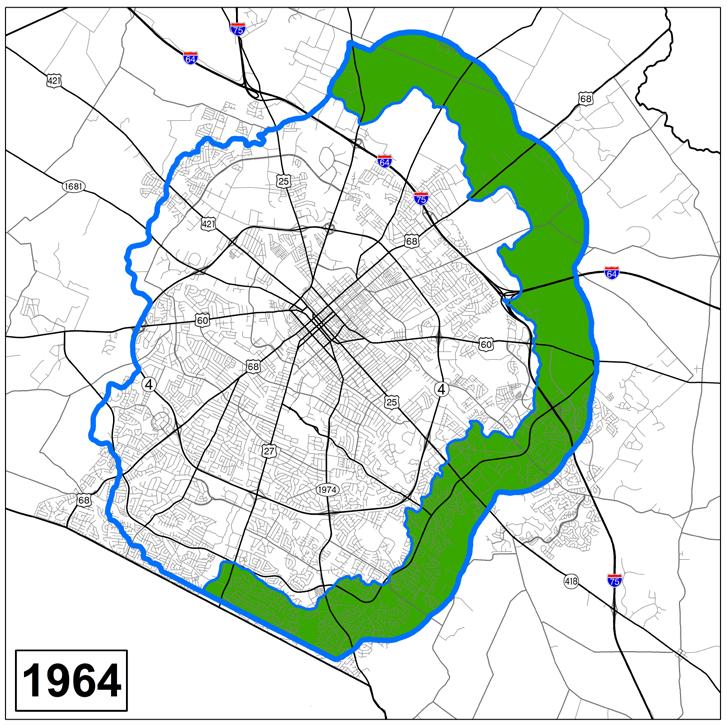


DRAFT

PUBLIC INPUT SUMMARY
Imagine Lexington 2045 received public comment from over 4,000 contributors from all walks of life participated in the development of Imagine Lexington. A concerted effort was made to involve as many people as possible through new innovative strategies, and the result was an unprecedented response from the community. The philosophy is simple – the more input received, the higher the quality of the end product. Planning staff, Planning Commission, and Council heard from individuals, and representatives of community organizations throughout the two-year process, and incorporated the feedback into the plan. The final product is reflective of the broad community interests and though not every individual request could be honored, it is a far better plan for the input received.
PHASE I – GOALS & OBJECTIVES
On the Table 2017 was an incredible success for the 2018 Comprehensive Plan plan, moving participation in the planning process from hundreds to thousands. For Imagine Lexington 2045, On the Table was incorporated yet again, but this time with a new collaborative partner in CivicLex and a more specific focus on the Comprehensive Plan. The results were a wealth of information that will live on well beyond the life of this planning process and will provide civic groups and interested organizations with a vast amount of data that is sortable and customizable to answer a wide variety of questions about preferences for Lexington’s future.
In addition to On the Table, outreach through Commerce Lexington solicited the opinions of the business community in Lexington through an intentional focus group process. This process provided staff the ability to hear directly from business leaders in the community. Staff not only heard from businesses, but through an outreach to civic organizations, heard from ten different groups that focus on the environment, neighborhoods, renters, smart growth, and other topics. Additionally, input was received from internal Divisions within the LFUCG as well, as they were asked to lend their expertise to our future growth strategy. In addition to the individual public input, the Planning Staff solicited input from any community organization willing to give it. Over 60+ timeslots, bookable online, were made available to any community-minded organization willing to take the time to present their ideas or concerns. Ten organizations came forward and offered information to staff.
All of the public input from these mechanisms, and a handful of other small public input offerings in 2022 and early 2023 were synthesized into a full Public Input Report, which is available in Appendix (TBD). The Planning Commission and Council considered this input as they deliberated and reviewed it along with the other data and information presented to them throughout the process. At the conclusion, a public hearing was held by the Planning Commission on February 16, 2023 with a final vote on February 23, 2023 approving the Goals & Objectives. These Goals & Objectives were further amended through a Council Committee of the Whole process in May and June of 2023, resulting in a public hearing on May 9, 2023. The Goals & Objectives in this Imagine Lexington were fully adopted by the Council on June 15, 2023.
PHASE II – ELEMENTS & PLACEBUILDER
The second half of the Imagine Lexington 2045 process included additional opportunities for public engagement, including offering a number of opportunities for one-on-one engagement with Planning staff to discuss the draft plan in depth. [NUMBER] individuals or organizations scheduled meetings to give feedback. A public input survey was developed and publicized through a robust traditional and social media campaign. Over [NUMBER] surveys were submitted. Additionally, Planning solicited targeted feedback from members of the development community
on updates to The Placebuilder as well as with numerous boards and commissions that support various elements of the plan. The Greenspace Trust, Mayor’s Commission on Racial Justice and Equality, Tree Board, Environmental Commission and others all contributed valuable feedback on the updated policies in Imagine Lexington 2045’s focused areas of change.
On August 30, a culminating public input open house was held at the Lexington Senior Center. The event was well attended by the public, as well as local news media. All the display boards and surveys were available at this event as well, and provided the backdrop for fascinating and enlightening conversations between staff and attendees. Though the number of participants was counted in the hundred and not thousands for Phase II, there were still many meaningful interactions. A public hearing was held on [DATE] and the Planning Commission voted to adopt.
ACKNOWLEDGMENTS.
PLANNING STAFF
Jim Duncan, AICP, Director
Sylvia Schmonsky
LONG RANGE PLANNING (PRIMARY AUTHORS)
Chris Taylor, Manager
Chris Woodall, AICP, Manager*
Hal Baillie, AICP
Samantha Castro, AICP*
Rachael Lay
Valerie Friedmann
Boyd Sewe
SB Stroh
Emery Elkinson, Student Intern*
PLANNING SERVICES
Traci Wade, AICP, Manager
Daniel Crum, AICP
Stephanie Cunningham
Cheryl Gallt
Autumn Midyett Goderwis
Meghan Jennings
Donna Lewis
Tom Martin, AICP
Paula Schumacher
Bill Sheehy
TRANSPORTATION PLANNING
Chris Evilia, AICP, Manager
Hannah Crepps
Joseph David
Kenzie Gleason
Sam Hu
Stuart Kearns
Scott Thompson
Debbie Woods
PLANNING COMMISSION
Ivy Barksdale
Kevin Adkins, Chief Development Officer
Headley Bell*
Zach Davis
Anthony DeMovellan*
Larry Forester, Chair
Janice Meyer
Robin Michler
Bruce Nicol
Mike Owens
Frank Penn*
Graham Pohl
William Wilson
Judy Worth
URBAN COUNTY COUNCIL
Linda Gorton, Mayor
Whitney Elliot Baxter
Fred Brown
James Brown
Amanda Mays-Bledsoe*
Chuck Ellinger II
Tayna Fogle
Denise Gray
Steve Kay*
David Klouiber*
Susan Lamb*
Shayla Lynch
Hannah LeGris
Josh McCurn*
Richard Moloney*
Brenda Monarrez
Liz Sheehan
Kathy Plomin
DRAFT
Jennifer Reynolds
Dave Sevigny
Keith Horn, Commissioner of Planning, Preservation & PDR
*Denotes former staff/Planning Commission/ Urban County Council members
PHOTO CREDITS
(Update and credit all photos used) Select images provided by Lexington local, Nash Werner.

DRAFT

WHAT’S IN THE PLAN?
GOALS & OBJECTIVES.
Informed by Lexington residents, the Goals & Objectives are the backbone of Imagine Lexington2045, its themes, and the resulting policies. Their key purpose is to ensure that the urban growth boundary and other Long Range Planning issues address needs for new urban development and contribute to the property of Lexington.
ELEMENTS & IMPLEMENTATION.
The Elements are the strategy that provides a means to accomplish the Goals & Objectives. State law requires a comprehensive plan to address land use, transportation, and community facilities at a minimum, but Lexington has historically taken the opportunity to address housing, environmental considerations, historic preservation issues, and many other facets of the community. These elements are structured within cross-cutting “THEMES” that reflect the true nature of how the community operates and interacts. Each theme also has “PILLARS” which provide organization and emphasis within each theme. Within the pillars are “POLICIES” that provide explicit direction in either an internally or externally focused way. Specific internally focused implementation items derived from these policies are “ACTION ITEMS” that serve as a work program for Planning Staff. Externally focused policies are concentrated into criteria for proposed development that are housed within “THE PLACEBUILDER”.
THEMES, PILLARS, & POLICIES.
Imagine Lexington’s five themes stem directly from the Goals & Objectives. Each theme focuses on a specific topic that is relevant to the long-term success and vitality of Lexington as it continues to grow. Branching from each theme is a set of three pillars, which categorize a robust set of policies that guide future community development initiatives.
THE PLACEBUILDER.

The Placebuilder is a tool for reviewing development proposals for agreement with the Comprehensive Plan. It is a visual guidebook that provides actionable development criteria derived directly from Imagine Lexington themes and policies. The Placebuilder was designed to encourage dialog between development applicants, communities, Planning staff, the Planning Commission, and the Urban County Council
WELL - PLANNED CITIES DO NOT HAPPEN BY ACCIDENT.
An intentional process called comprehensive planning ensures that entire community is served by equitable growth. Comprehensive planning relies heavily on public input - communities should determine how they want to grow.
WE WANT TO KNOW HOW YOU IMAGINE LEXINGTON.
We challenge you to get involved in the planning process. Start by becoming familiar with our 2045 Comprehensive Plan, Imagine Lexington, and then share your thoughts at public input opportunities.


READY TO GET STARTED?
Imagine Lexington is available for download or Online browsing at www.imaginelexington.com





















THEME & POLICIES SUMMARY.
THEME A: BUILDING AND SUSTAINING SUCCESSFUL NEIGHBORHOODS.
PILLAR I: DESIGN.
• Design policy #1: Utilize a people-first design, ensuring that roadways are moving people efficiently & providing equitable pedestrian infrastructure
• Design policy #2: Ensure proper road connections are in place to enhance service times & access to public safety, waste management and delivery services for all residents.
• Design policy #3: Multi-family residential developments should comply with the Multi-Family Design Standards in Appendix A.
• Design policy #4: Provide development that is sensitive to the surrounding context.
• Design policy #5: Provide pedestrian-friendly street patterns & walkable blocks to create inviting streetscapes.
• Design policy #6: Adhere to the recommendations of the Lexington area MPO bike/ Pedestrian Master Plan, adopted in 2018.
• Design policy #7: Design car parking lots and vehicular use areas to enhance walkability and bikability.
• Design policy #8: Provide varied housing choice.
• Design policy #9: Provide neighborhood-focused open spaces or parks within walking distance of residential uses.
• Design policy #10: Reinvest in neighborhoods to positively impact Lexingtonians through the establishment of community anchors.
• Design policy #11: Street layouts should establish clear public access to neighborhood open space and greenspace.
• Design policy #12: Support neighborhood-level commercial areas.
• Design policy #13: Development should connect to adjacent stub streets & maximize the street network.
PILLAR II: DENSITY.
• Density policy #1: Locate high density areas of development along higher capacity roadways (minor arterial, collector), major corridors & downtown to facilitate future transit enhancements.
• Density policy #2: Infill residential can & should aim to increase density while enhancing existing neighborhoods through context sensitive design.
• Density policy #3: Provide opportunities to retrofit incomplete suburban developments with services and amenities to improve quality of life and meet climate goals.
DRAFT
• Density policy #4: Allow & encourage new compact single family housing types.
PILLAR III: EQUITY.
• Equity policy #1: Ensure equitable development and address Lexington’s segregation resulting from historic
planning practices and policies: rectify the impact of redlining, and discrimination based on race and socioeconomic status.
• Equity policy #2: Provide an ongoing and contextualized educational curriculum on historical planning practices and policies acknowledging their impact on marginalized neighborhoods in Lexington.
• Equity policy #3: Meet the demand for housing across all income levels.
• Equity policy #4: Provide affordable housing across all areas, affirmatively furthering fair housing, complying with HUD guidance.
• Equity policy #5: Add residential opportunities by proactively up-zoning areas near transit for populations who rely solely on public transportation.
• Equity policy #6: Preserve & enhance existing affordable housing through the Land Bank, Community Land Trust & Vacant Land Commission.
• Equity policy #7: Protect affordable housing tenants through improved code enforcement policies.
• Equity policy #8: Improve access to and promote accessory dwelling units as a more affordable housing option in Lexington.
• Equity policy #9: Community facilities should be well integrated into their respective neighborhoods.
• Equity policy #10: Housing developments should implement universal design principles on a portion of their units.
• Equity policy #11: Ensure stable housing. Empower individuals through shelter, and provide housing security through permanent residences and comprehensive assistance programs.
THEME B: PROTECTING THE ENVIRONMENT. PILLAR I: PROTECTION.
DRAFT
• Protection policy #1: Continue the Sanitary Sewer Capacity Assurance Program (CAP) and encourage the Stormwater Incentive Grant Program to reduce impacts of development on water quality.
• Protection policy #2: Conserve and protect environmentally sensitive areas, including sensitive natural habitats, greenways, wetlands and water bodies.
• Protection policy #3: Continue to implement the PDR program to safeguard Lexington’s rural land.
• Protection policy #4: Conserve active agriculture land in the Rural Service Area while promoting sustainable food systems.
• Protection policy #5: Promote and connect local farms with the community through integrated partnerships.
• Protection policy #6: Promote context-sensitive agritourism in the Rural Service Area.
• Protection policy #7: Protect the urban forest and significant tree canopies.
• Protection policy #8: Protect and enhance biodiversity in both the Urban and Rural Service Areas.
• Protection policy #9: Respect the geographic context of natural land, encourage development to protect steep slopes, and locate building structures to reduce unnecessary earth disruption.
• Protection policy #10: Reduce light pollution to protect dark skies.
PILLAR II: SUSTAINABILITY.
• Sustainability policy #1: Establish a plan to reduce community-wide greenhouse gas emissions to net zero by 2050.
• Sustainability policy #2: Establish a plan to reduce all LFUCG facilities, operations, and fleets to net zero greenhouse gas emissions.
• Sustainability policy #3: Reduce air pollution and greenhouse gasses through compact development and complete streets that encourage multimodal transportation options.
• Sustainability policy #4: Reduce and mitigate negative environmental impacts of impervious surfaces and vehicle use areas
• Sustainability policy #5: Expand and promote energy efficiency, renewable energy, and electrification initiatives.
• Sustainability policy #6: Apply for LEED for Cities certification to track progress toward sustainability, greenhouse gas emissions reduction, and environmental equity objectives.
• Sustainability policy #7: Develop and proactively share educational materials and programs to increase public awareness of energy efficiency benefits and services
• Sustainability policy #8: Enhance Lexington’s recycling, composting, and waste management programs.
• Sustainability policy #9: Incentivize green stormwater infrastructure beyond regulatory requirements.
• Sustainability policy #10: Develop incentives for Green Building Practices and Sustainable Site Design.
• Sustainability policy #11: Require low impact landscaping and native plants species.
PILLAR III: RESTORATION.
• Restoration policy #1: Implement the LFUCG urban forestry management plan to restore and grow Lexington’s urban forest.
• Restoration policy #2: Identify opportunities to strategically link parks, trails, complete streets, greenways, and natural areas to advance Lexington’s green infrastructure network.
• Restoration policy #3: Support community gardens and urban agriculture to restore natural resources within the Urban Service Area.
• Restoration policy #4: Improve public health and reduce the regional carbon footprint by decreasing vehicle emissions through the use of alternative fuel vehicles.
• Restoration policy #5: Improve watershed management and waterway quality.
• Restoration policy #6: Coordinate to address litter abatement.
• Restoration policy #7: Support Environmental Justice and equity.
THEME C: CREATING JOBS AND PROSPERITY.
PILLAR I: LIVABILITY.
• Livability policy #1: Encourage economic opportunities for a wide array of agritourism while preserving the Bluegrass identity.
• Livability policy #2: Emphasize the preservation, protection, & promotion of the iconic Bluegrass landscape along rural gateways & roadways serving as primary tourist routes.
• Livability policy #3: Promote sports tourism through the development of athletic complexes & enhance Lexington’s existing facilities.
• Livability policy #4: Promote economic development through improving the livability of downtown to support more residents and community serving businesses.
• Livability policy #5: Enhance programs & activities by Lexington’s Parks & Recreation department, & support public event planning, community events, & festivals.
• Livability policy #6: Attract & retain a vibrant workforce by improving affordable housing opportunities, amenities, & entertainment options.
• Livability policy #7: Create a walkable city with quality transit that is attractive to new businesses and residents.
• Livability policy #8: Promote quality of life aspects, including investment in public space, as an attraction to new businesses & residents.
• Livability policy #9: Promote economic development through the preservation of strategically & appropriately located industrial & production zoned land.
PILLAR II: DIVERSITY.
• Diversity policy #1: Create opportunities for incubators. Seek incentives for owners of vacant office/laboratory space, & for developers who build incubator space for startups & for growing businesses.
• Diversity policy #2: Encourage a diverse economic base to provide a variety of job opportunities, allowing upward mobility for lower income residents of Fayette County.
• Diversity policy #3: Support full funding & adequate staff for the Minority Business Enterprise Program (MBEP) which increases diversification of city vendors through promoting an increase in minority, veteran, & womenowned companies doing business with the city.
• Diversity policy #4: Encourage training, programs, access, & inclusion to employment opportunities.
• Diversity policy #5: Maximize context sensitive employment opportunities within the opportunity zone tracts, providing equitable community development, & prioritizing local residents for advancement opportunities.
• Diversity policy #6: Increase flexibility on types of home occupations allowed.
PILLAR III: PROSPERITY.
• Prosperity policy #1: Promote hiring local residents, & recruit employees living in areas of construction projects.
• Prosperity policy #2: Support continued funding for economic development.
• Prosperity policy #3: Continue to protect the agricultural cluster & equine industry, & support existing agricultural uses, while promoting new innovative agricultural uses in the Rural Service Area.
• Prosperity policy #4: Encourage installation of fiber-optic broadband infrastructure for high-tech & other industries.
• Prosperity policy #5: Continue to raise awareness of farms & farm tours.
• Prosperity policy #6: Promote Kentucky Proud & local Lexington products using unified branding.
• Prosperity policy #7: Support & increase networking opportunities for career related institutions, organizations,
& agencies.
• Prosperity policy #8: Provide employment opportunities that match the graduating majors from local colleges & vocational training institutions.
• Prosperity policy #9: Recruit professional services that utilize vacant office space.
• Prosperity policy #10: Encourage flexible parking & shared parking arrangements.
• Prosperity policy #11: Expand job opportunities through education & training to retain existing businesses & attract new ones.
• Prosperity policy #12: Implement the Legacy Business Park Master Plan for the 250 acres of publicly-controlled economic development land at Coldstream research campus.
• Prosperity policy #13: Promote increasing the supply of farm workers, & the availability & affordability of using agricultural technology, & agricultural equipment.
• Prosperity policy #14: Create and implement mechanisms for low, moderate, and middle income residents to access affordable and equitable home financing options to enable them to “get on the property ladder” and accumulate intergenerational wealth.
• Prosperity policy #15: Collaborate with developers, commercial entities, and non-profits to eliminate food deserts throughout the county and ensure that all residents have east access to affordable and nutritious food.
• Prosperity policy #16: Create a central coordinating function for all social services in the county, including nonprofit, faith-based, and governmental services.
THEME D: IMPROVING A DESIRABLE COMMUNITY.
PILLAR I: CONNECTIVITY.
• Connectivity policy #1: Street design should reflect & promote the desired place-type.
• Connectivity policy #2: Create multi-modal streets that satisfy all user needs and provide equitable multimodal access for those who do not drive due to age, disability, expense, or choice.
• Connectivity policy #3: Encourage Transit-Oriented Development, increase density along major corridors, and support transit ridership, thus reducing Vehicle Miles Traveled (VMT).
• Connectivity policy #4: Design street networks that provide alternative route options and reduce traffic congestion.
• Connectivity policy #5: Streets should be designed for the desired speed, using built-in traffic calming measures such as roundabouts, narrower street widths, chicanes, medians, etc.
• Connectivity policy #6: Develop a multi-modal transportation network and infrastructure; seek collaboration with regional transit partners for the commuting public.
• Connectivity policy #7: Plan for the long-term land use and transportation impacts of connected and autonomous vehicles (CAV).
PILLAR II: PLACEMAKING.
• Placemaking policy #1: Create development standards and best practices for land adjacent to shared use trails and trail corridors.
• Placemaking policy #2: Activate built and natural environments to promote economic development and create safer spaces.
• Placemaking policy #3: Establish design standards for placemaking.
• Placemaking policy #4: Create quality & usable open space for all developments.
• Placemaking policy #5: Review zoning ordinance & subdivision regulations to create more walkable places.
• Placemaking policy #6: Promote a more resilient power grid while maintaining urban canopy and enhancing the visible characteristics of Lexington.
• Placemaking policy #7: Cultivate a more collaborative predevelopment process by implementing the recommendations of the Public Engagement Toolkit.
• Placemaking policy #8: Develop a tactical placemaking program within the Division of Planning to work with interested neighborhoods & aid in the organization of activities.
• Placemaking policy #9: Honor Lexington’s history by requiring new development & redevelopments to enhance the cultural, physical, & natural resources that have shaped the community.
• Placemaking policy #10: Coordinate with non-profit organizations to designate public art easements on new development.
• Placemaking policy #11: Update the adaptive reuse ordinance.
• Placemaking policy #12: Analyze underutilized commercial property through corridor land use & transportation studies.
• Placemaking policy #13: Update the Downtown Master Plan.
• Placemaking policy #14: Develop a new citywide festival to entice visitors & provide additional draw during the tourism off-season.
• Placemaking policy #15: Reduce/discourage vehicle-oriented development patterns, such as drive through business and gas stations, within neighborhoods and the urban core.
PILLAR III: SUPPORT.
DRAFT
• Support policy #1: Ensure school sites are designed to integrate well into the surrounding neighborhood.
• Support policy #2: Incorporate natural components into school site design to further the goals of Theme B (Protecting the Environment), but also to provide calming elements that reduce student stress & anxiety.
• Support policy #3: Support the maintenance & expansion of a robust wireless communications network creating reliable service throughout Lexington’s urban & rural areas.
• Support policy #4: Provide equitable healthcare opportunities throughout Lexington to allow for the wide range of medical needs of everyone.
• Support policy #5: Provide equity in social services by ensuring those in need are served by social service community facilities that address homelessness, substance abuse, mental health, & other significant issues.
• Support policy #6: Ensure all social service & community facilities are safely accessible via mass transit, bicycle, & pedestrian transportation modes.
• Support policy #7: Protect and promote social services and take active measures to reduce homelessness.
• Support policy #8: Build upon the success of the Senior Citizens’ Center to provide improved quality of life opportunities for the largest growing population demographic.
• Support policy #9: Implement additional creative cohousing opportunities that are both accessible & affordable for seniors & people with disabilities.
• Support policy #10: Incorporate street trees as essential infrastructure.
• Support policy #11: Develop a climate adaptation plan.

• Support policy #12: Support programs that protect the rights of tenants during the eviction process.
THEME E: URBAN AND RURAL BALANCE. PILLAR I: ACCOUNTABILITY.
• Accountability policy #1: Complete the new process for determining longterm land use decisions involving the Urban Service Area and Rural Activity Centers.
• Accountability policy #2: Develop growth benchmarks and determine best measurable methods to monitor them and report progress on a regular basis.
• Accountability policy #3: Implement the Placebuilder to ensure development compliance with the goals, objectives, and policies of the Comprehensive Plan.
• Accountability policy #4: Modernize the Zoning Ordinance to reflect the direction of the 2045 Comprehensive Plan.
DRAFT
• Accountability policy #5: Redesign and retrofit the Lexington roadway network to safely and comfortably accommodate all users so as to encourage walking, bicycling and transit usage.
• Accountability policy #6: Partner with other agencies and organizations to create public education and outreach opportunities.
• Accountability policy #7: Establish a coordinating office to advance climate action and sustainability planning
efforts.
• Accountability policy #8: Establish a coordinating office to implement recommendations of the mayor’s Commission For Racial Justice And Equality.
• Accountability policy #9: Enhance diversity in Lexington’s boards and commissions.
PILLAR II: STEWARDSHIP.
• Stewardship policy #1 : Uphold and modernize the Urban Service Area concept.
• Stewardship policy #2: Capitalize on the diverse economic development, housing, and tourism opportunities throughout the Bluegrass region and engage in discussions to further connect regional economic hubs.
• Stewardship policy #3: Increase regional transportation cooperation and pursue multimodal transportation options to facilitate inter-county connectivity.
• Stewardship policy #4: Coordinate with surrounding counties to capitalize on the inherent tourism draws of the Bluegrass region.
• Stewardship policy #5: Fully realize the development potential within Lexington’s Rural Activity Centers while avoiding negative impacts to surrounding agriculture, rural settlements, and scenic resources.
• Stewardship policy #6: Identify new compatible rural land uses that would enhance Lexington’s economy and provide additional income-generating possibilities for local farmers.
• Stewardship policy #7: Enhance regional collaboration for coordinated planning efforts.
• Stewardship policy #8: Ensure future development is economically, environmentally, and socially sustainable.

• Stewardship policy #9: Follow and implement the recommendations of the 2007 study of Fayette County’s small rural communities and the 2017 Rural Land Management Plan to protect and preserve Lexington’s rural settlements.
PILLAR II: GROWTH.
• Growth policy #1: Modernize regulations that support infill and redevelopment.
• Growth policy #2: Identify and enhance opportunities for infill and redevelopment in downtown areas.
• Growth policy #3: Implement the recommendations of the 2018 Your Parks, Our Future Master Plan.
• Growth policy #4: Promote the adaptive reuse of existing structures.
DRAFT
• Growth policy #5: Identify and preserve Lexington’s historic assets, while minimizing unsubstantiated calls for preservation that can hinder the city’s future growth.
• Growth policy #6: Address new development context along the boundaries of existing historic districts while encouraging infill and redevelopment.
• Growth policy #7: Ensure stormwater and sanitary sewer infrastructure is placed in the most efficient and effective location to serve its intended purpose.

• Growth policy #8: Identify catalytic redevelopment opportunities to proactively rezone properties, clear regulatory hurdles, and expedite redevelopment.
• Growth policy #9: Support missing middle housing types throughout Lexington.
• Growth policy #10: Establish Transit-Oriented Development (TOD) for new development and infill along major corridors.
• Growth policy #11: Imagine Lexington 2045 anticipates a variety of land use changes will occur throughout the Urban Service Area and recommends those that are in agreement with the goals, objectives, and policies within this comprehensive plan. Land use changes alone in an area are not sufficient to constitute major changes of an economic, physical, or social nature as provided in state statute for the approval of a zone map amendment.
• Growth policy # 12: Adopt a Master Plan for the expansion of the Urban Service Area that addresses Lexington’s growth needs through sustainable and equitable development.
• Growth policy # 13: Establish minimum residential densities and commercial intensities for new growth areas so that development covers the cost of the provision of infrastructure, community services, and facilities.
• Growth policy # 14: Identify and provide mechanisms that produce affordable housing.

COMMUNITY DEMOGRAPHICS

COMMUNITY SNAPSHOT
Population Growth (2022)
Age Range (2021)
Racial Composition (2021)
Renter Vs. Owner (2021)
Household Size (2021)
EQUITY
Non-White Communities (2010)
Individuals with Disabilities (2021)
HRC Municipality Index Score (2022)
AARP Livability Index (2022)

Income Disparities (2022)
Food Insecurity
HOUSEHOLD ECONOMICS
Housing Costs as % of Income (2020)
Median Home Price/Median Rent (2023)
Vehicle Ownership (2021)
Household with Broadband Internet Access (2023)
VEHICULAR SAFETY
Fatal Motor Vehicle Crashes Per Year (2017-2021)
Fatal Motor Vehicle Crashes Per Year (Locations) (2017-2021)
Pedestrians Involved in Fatal Crashes (2017-2021)
URBAN SERVICE AREA
USB
RURAL SERVICE AREA
RSA
PUBLIC HEALTH
Life Expectancy (2023)
Care Ratios (2023)
Facilities (2023)
EDUCATION
SUSTAINABILITY + CLIMATE
Temperatures (2000-2022)
Air Quality (2020)
Nature Score (2020)
Precipitation Risk (2022)
LABOR
Workers Commute (2020)
DRAFT SOURCES.
Unemployment Rate (2010-2023)
Transportation to Work (2020)
Household Incomes (2020)
Graduation Rate (2023)
Test Score (2023)
School Segregation Index (2023)





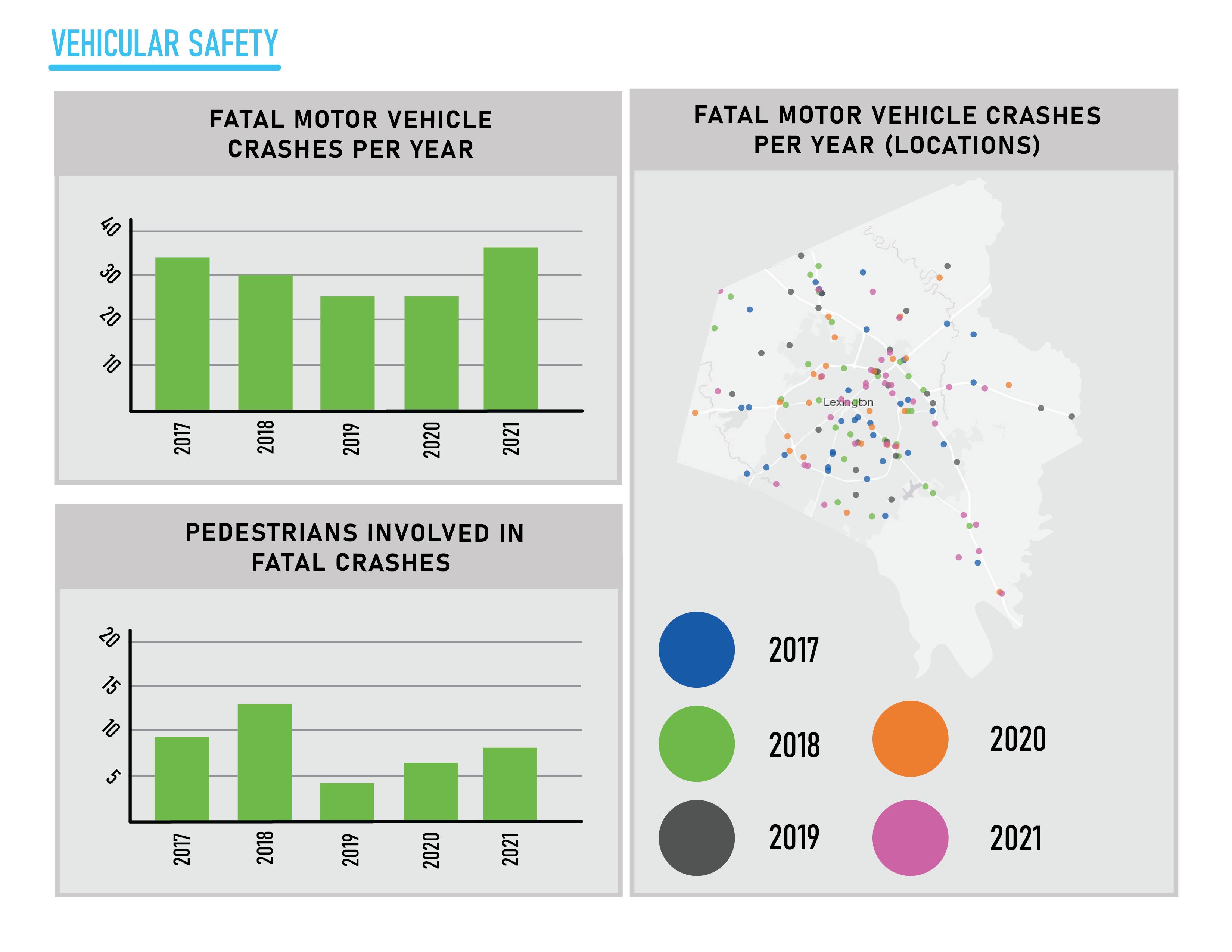

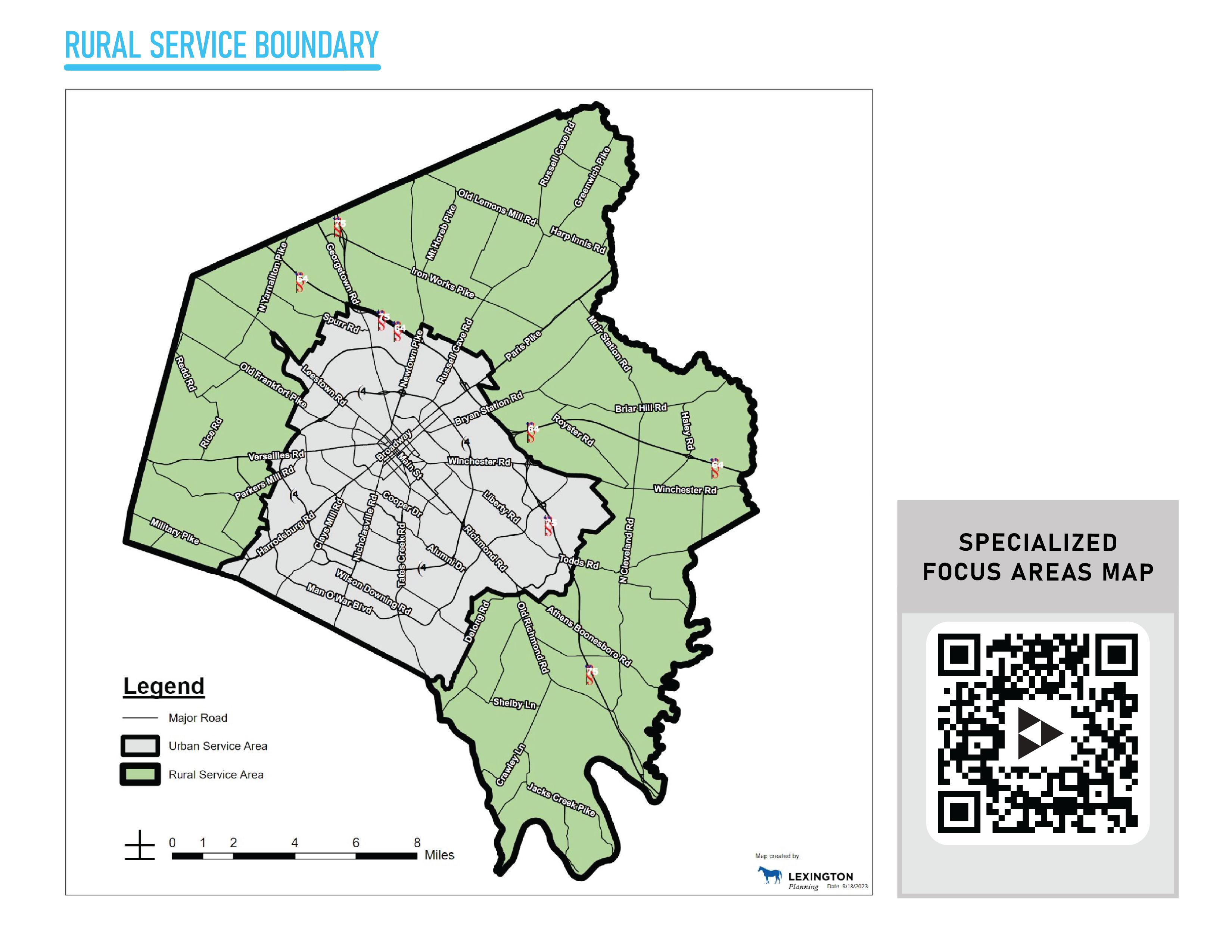
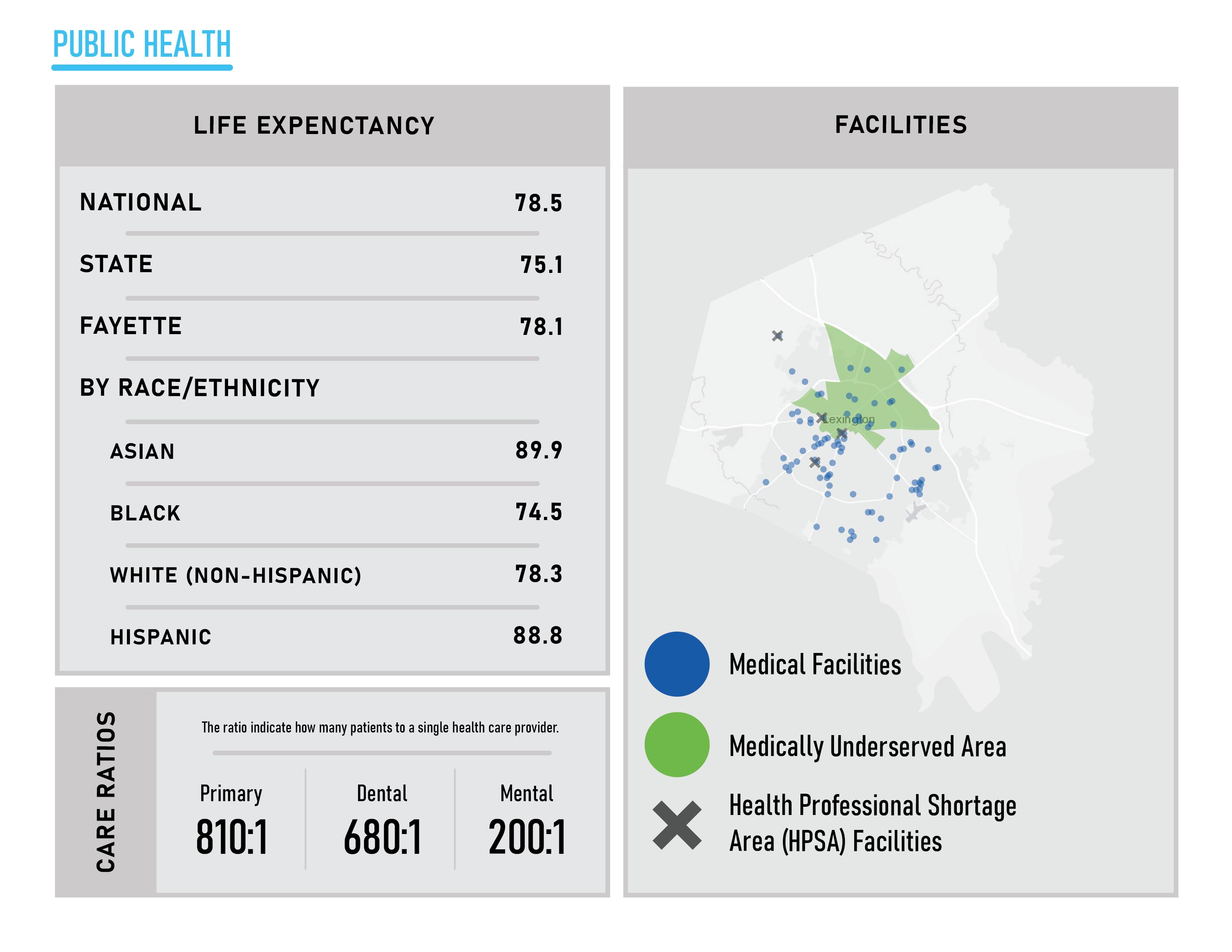

DRAFT

DRAFT The Placebuilder
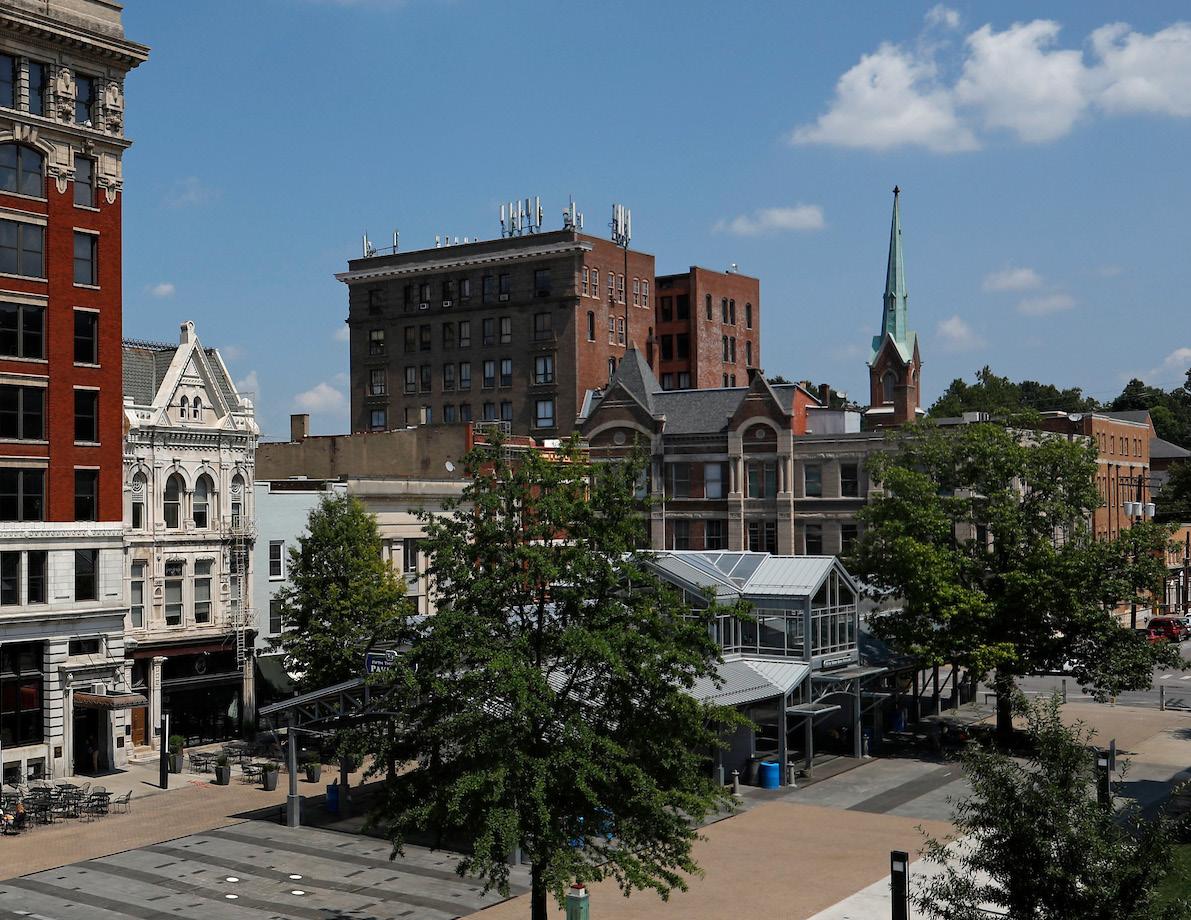
WELCOME TO THE PLACEBUILDER

WHAT IS IT?
The Placebuilder element of Imagine Lexington 2045 is a compilation of the urban planning best practices that distills the policies of this Comprehensive Plan. It sorts these best practices into development criteria that are applicable to proposed developments seeking a zone change. In addressing the development criteria, applicants demonstrate that they are in agreement with the Comprehensive Plan, and that their individual developments work toward implementing the broader Goals and Objectives developed by the community.
Under previous Comprehensive Plans, justifications generally addressed broad Goals and Objectives, without much support from the remainder of the document. Imagine Lexington differs from many comprehensive plans in that it eschews the traditional future land use map in favor of a policy based document. Under The Placebuilder, justifications and development plans will be reviewed in accordance with the policies of the plan, which provide more specific guidance on how to further the Goals and Objectives.
A BRIEF OVERVIEW...
1. ENGAGEMENT
Imagine Lexington strongly encourages meaningful engagement between applicants and stakeholders for design and visioning of a development before the process begins.
3. THE DEVELOPMENT TYPE
Determine whether your proposal will adequately address one of the most suitable Development Types.
Review the criteria for that Development Type.
2. THE PLACE - TYPE
DRAFT
Consider your side, community feedback, and surrounding context. This includes whether or not your site falls within the Adopted Small Area Plans or Expansion Area Master Plan.
Review the Place Types and determine whether the development you are seeking enhances the existing place or sets a new Place-Type standard for the location.
Verify that your development will address the stated priorities of that Place Type
4. ZONE
The Placebuilder is a set of development criteria to be addressed by applicants in their zone change application justifications. Its purpose is to provide transparency to applicants, stakeholders, the Planning Commission, and the Urban County Council in how development proposals are evaluated. This framework outlines the process by which development proposals are evaluated to ensure they adhere to the requirements set forth in KRS 100, which preferences compliance with the Comprehensive Plan. Not all criteria may be applicable to every proposal, however every zone change justification should address each one, noting why certain criteria may or may not apply. No zone change application will satisfy every single criterion, and the Placebuilder is not a checklist. The applicability of criteria will be assessed through the development review process.
5. APPLICATION
Address each of the criteria in your application/development plan, showing how your proposed development meets each of the requirements
6. REVIEW & PUBLIC INPUT
Review recommended zones. Determine the appropriate zone for the suitable Development Type you are seeking. Schedule your preapplication meeting with planning stuff to highlight Comprehensive Plan and zoning ordinance related issues that may require variances or waivers, and to review community feedback thus far.
Once an applicant has submitted a complete development application addressing all steps, it will undergo planning staff evaluation and enter the zone change process.
Details on zone change process can be found at Imaginlexington.com/mar
DOWNTOWN
DOWNTOWN IS...
The urban epicenter of commerce and entertainment. The core should be anchored by high-rise structures with activated groundlevels. They are surrounded by mid-rise buildings that increasingly offer dense residential uses. A mix of uses and variety of transportation options should be prioritized, and parking should be addressed as a shared urban core asset.*
Page 000
MOST
2ND TIER URBAN IS...
Where significant infill and redevelopment opportunities exist to complement the urban core. While not expected to be as intensely developed as the downtown core, high-rise opportunities are not precluded provided that they are context-sensitive. The forward trend for development in the 2nd tier urban areas should be towards increased walkability and intensity.*



MOST SUITABLE DEVELOPMENT TYPES:
REGIONAL CENTER
A REGIONAL CENTER IS...
A vibrant hub of commerce, employment, diverse housing opportunities, & entertainment. They include larger buildings with active ground levels, intentional open spaces, & walkable transportation networks, all to provide the user/resident with a unique experience. It is often located at major intersections & along primary corridors.*
MOST SUITABLE DEVELOPMENT TYPES:
CORRIDOR
A CORRIDOR IS...
Lexington’s major roadways focused on commerce and transportation. The overriding emphasis of Imagine Lexington is significantly overhauling the intensity of the major corridors. The future of Lexington’s corridors lies in accommodating the shifting retail economic model by incorporating high density residential and offering substantial flexibility to available land uses.*
MOST SUITABLE DEVELOPMENT TYPES:
COMPLETE NEIGHBORHOOD
A NEW COMPLETE NEIGHBORHOOD IS...
ENHANCED NEIGHBORHOOD
AN ENHANCED NEIGHBORHOOD IS...
An existing residential area to be enhanced with additional amenities, housing types, and neighborhood-serving retail, services, and employment options. Development should be context-sensitive to surrounding areas and should add to the sense of place. Incorporating multimodal connections is crucial to neighborhood success and viability.*
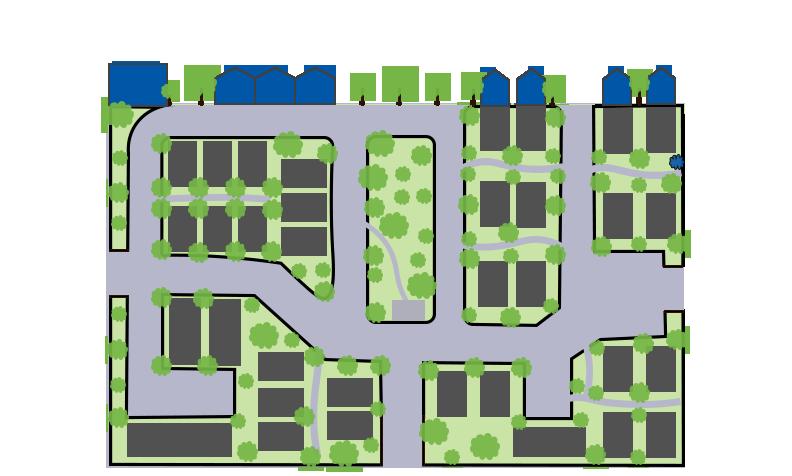


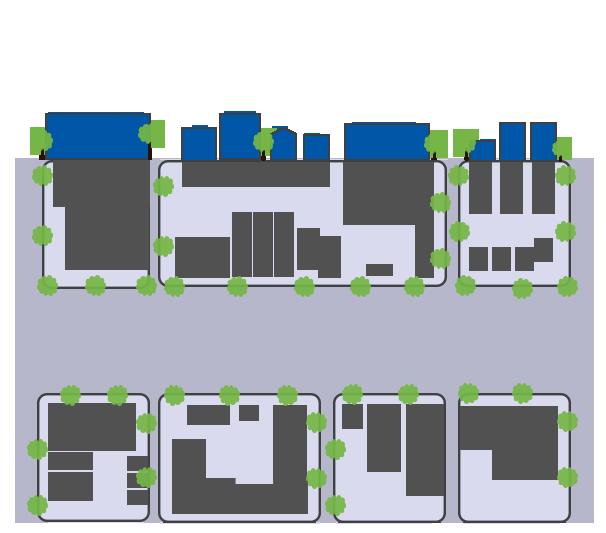
MOST SUITABLE DEVELOPMENT TYPES:
INDUSTRY & PRODUCTION CENTER
AN INDUSTRY & PRODUCTION CENTER IS...
Where Lexington’s most intense types of economic development and job creation occur. These places should be located near major corridors to facilitate efficient and affordable shipping and transportation of goods throughout the region. Developments should minimize negative impacts on adjoining lower intensity uses.*
Page 000
MOST SUITABLE DEVELOPMENT TYPES
INR
NEW MROFB ASED P R OJECT B-1 DRAFT DIVISION OF PLANNING THE PLACEBUILDER | 264
DEVELOPMENT TYPE - RESIDENTIAL
A mixture of attached and detached single family homes, of varying formats, and low density multi-family dwelling units.
Homogeneous neighborhoods that do not include a mix of housing types should be avoided. Low density residential is only appropriate as a component of “Enhanced Neighborhoods” and “New Complete Neighborhoods”, and should be supplemented by a variety of uses and housing options to create sustainable places.

Primarily attached and multi-family units, with interspersed single-family detached dwellings.
Multi-family units should complement and enhance existing development through quality design and connections.
Primarily multi-family units.
Multi-family units should complement and enhance existing development through quality design and connections.

Primarily high-rise multi-family units.
This type of development is generally reserved for the most intensely developed areas in Lexington, with the infrastructure to support it. Where these developments abut existing or historic neighborhoods, appropriate step-downs or context sensitive elements should be used to minimize intrusion.
Multimodal network connections, including connected streets, are required to keep an efficient transportation network that provides viable options for all users.
Nearby commercial/employment uses and greenspace should be easily accessible, and bicycle and pedestrian modes should be maximized to connect residents to destinations.
Access to these developments is typically through streets designated with the collector classification or above. Mass transit infrastructure should be provided along transit routes through collaboration with Lextran, and bicycle and pedestrian facilities should be plentiful to provide multimodal options.
Mass transit infrastructure should be provided along transit routes through collaboration with Lextran, and bicycle and pedestrian facilities should be plentiful to provide multimodal options. Parking should be minimized in favor of multimodal options, and where necessary, should be predominantly accommodated within garages.

These developments should include intentional open space designed to fit the needs of area residents, and be in walking distance of nearby neighborhood-serving commercial/employment uses.
These developments should include intentional open space designed to fit the needs of area residents, and a variety of neighborhood-serving commercial/ employment uses.
DRAFT
These developments should include intentional open space designed to fit the needs of area residents, and a variety of neighborhood-serving commercial/ employment uses.
Open space and greenspace opportunities should be adequate within the area to support the residents, or should be provided creatively on-site utilizing plazas, rooftop space, or other means that accomplish the goal, but still allow for high Floor Area Ratios.
DEVELOPMENT TYPE - NON -
Primarily neighborhood-serving commercial uses, services, places of employment, and/ or a mix of uses within low to mid-rise structures appropriately scaled to the surrounding neighborhood.
Mixed-use structures can include a mix of residential, commercial, services, and/ or employment uses, and an activated and pedestrian-scale ground level should be provided. Developments with a residential component are generally non-residential on the ground-floor with units above, providing opportunities for live/work arrangements.
The retail/service options typically include boutique-type establishments, neighborhood restaurants or pubs, and/ or neighborhood-serving services like dentists, daycares, etc., and the places of employment are small offices.
Primarily community-serving commercial uses, services, places of employment, and/ or a mix of uses within mid-rise structures with a higher Floor Area Ratio.

Mixed-use structures typically include more multi-family residential units and places of employment, and retail and commercial options generally draw from a larger geographic area. An activated and pedestrian-scale ground level should be provided.
These developments may include more employment space for professional office and can include some larger entertainment spaces.
Primarily regional-serving commercial uses, services, places of employment, and/ or a mix of uses within high-rise structures with a high Floor Area Ratio.
Mixed-use structures typically include an abundance of multi-family residential units, places of employment, and entertainment options, and the retail and commercial options generally draw from a regional geographic area.
Screening and buffers should be provided to adjoining lower-density residential developments, however those adjoining neighborhoods should retain convenient access to the development.
Primarily employment land dedicated to the most intense types of employment-centric development. This is the only category where uses are inherently incompatible and are best separated from adjacent uses.
These uses are best suited in areas where they already exist, collocating to utilize industrial-scale infrastructure to serve the needs of the users. Environmental protection measures should be taken to minimize impacts.
Bicycle and pedestrian connections to adjoining neighborhoods, and buildings oriented to the street are required to ensure the non-residential enhances nearby neighborhoods by creating a truly walkable environment.

Though they draw more external users, they should still include multimodal connections allowing for easy neighborhood access. Mass transit infrastructure is to be provided on par with that of other modes, and the higher-density housing types should be located in close proximity.
These developments are generally located along higher intensity roadways. Mass transit infrastructure, on par with that of other modes, should be provided, and bicycle and pedestrian connections to adjoining developments are required. Internal multimodal connectivity throughout the development is critical.
These uses are also heavy employers and should incorporate mass transit infrastructure, on par with that of other modes, to connect residents to their jobs.
Parking should be minimized and where necessary, located internally.
The buildings should be oriented to the street, and developments should avoid over-parking, with provided parking located internally.
Parking is generally provided in structures with activated ground levels.

RURAL DEVELOPMENTS
Development within the Rural Service Area (RSA) should consider the unique assets and opportunities offered by Lexington’s agricultural landscape. For this reason, the 2017 Rural Land Management Plan (RLMP), in tandem with applicable policies from Imagine Lexington listed below, should act as the primary guide for all rural development endeavors and should be directly addressed in development proposals within the RSA.
Due to the distinct difference between urban place-types and rural area considerations, the RLMP is better suited to guide the limited development within the RSA than the criteria set out in the Placebuilder. Additionally, the numerous policies, goals, and objectives within Imagine Lexington focusing on rural development link directly to the goals and objectives laid out by the RLMP These provide additional support for defining the intended nature of rural development and its impacts on the agricultural community.

IMAGINE LEXINGTON POLICIES FOR RURAL DEVELOPMENT
• Design Policy #6 Adhere to the recommendations of the Lexington area MPO bike/ pedestrian master plan, adopted in 2018.
• Protection Policy #2 Conserve and protect environmentally sensitive areas, including sensitive natural habitats, greenways, wetlands and water bodies.
• Protection Policy #3 Continue to implement PDR program to safeguard Lexington’s rural land.
• Protection Policy #4 Conserve active agriculture land in the rural service area while promoting sustainable food systems.
• Protection Policy #5 Promote and connect local farms with the community through integrated partnerships.
• Protection Policy #6 Promote context-sensitive agritourism in the rural service area.
• Protection Policy #8 Protect and enhance biodiversity in both the urban and rural service areas.
• Protection Policy #10 Reduce light pollution to protect dark skies.
• Sustainability Policy #11 Incentivize green stormwater infrastructure beyond regulatory requirements
• Sustainability Policy #12 Develop incentives for green building practices and sustainable site design.
• Restoration Policy #2 Identify opportunities to strategically link parks, trails, complete streets, greenways, and natural areas to advance Lexington’s green infrastructure network.
DRAFT
• Livability Policy #1 Encourage economic opportunities for a wide array of agritourism while preserving the bluegrass identity.
• Livability Policy #2 Emphasize the preservation, protection, & promotion of the iconic bluegrass landscape along rural gateways & roadways serving as primary tourist routes.
IMAGINE LEXINGTON POLICIES FOR RURAL DEVELOPMENT
• Prosperity Policy #3 Continue to protect the agricultural cluster & equine industry, & support existing agricultural uses, while promoting new innovative agricultural uses in the rural service area.
• Prosperity Policy #5 Continue to raise awareness of farms & farm tours.
• Prosperity Policy #6 Promote Kentucky proud & local Lexington products using unified branding.
• Placemaking Policy #9 Honor Lexington’s history by requiring new development & redevelopments to enhance the cultural, physical, & natural resources that have shaped the community.
• Stewardship Policy #1 Uphold and modernize the urban service area concept.
• Stewardship Policy #3 Increase regional transportation cooperation and pursue multimodal transportation options to facilitate inter-county connectivity.
• Stewardship Policy #4 Coordinate with surrounding counties to capitalize on the inherent tourism draws of the bluegrass region.
• Stewardship Policy #5 Fully realize the development potential within Lexington’s rural activity centers while avoiding negative impacts to surrounding agriculture, rural settlements, and view sheds.
• Stewardship Policy #6 Identify new compatible rural land uses that would enhance Lexington’s economy and provide additional income-generating possibilities for local farmers.
• Stewardship Policy #8 Ensure future development is economically, environmentally, and socially sustainable.
• Stewardship Policy #9 Follow and implement the recommendations of the 2007 study of Fayette county’s small rural communities and the 2017 rural land management plan to protect and preserve Lexington’s rural settlements.
• Growth Policy #3 Implement the recommendations of the 2018 your parks, our future master plan.
DRAFT
SPECIALIZED FOCUS AREAS
SMALL AREA PLANS
A fundamental goal of Imagine Lexington is to revitalize our city’s neighborhoods in ways that make them more sustainable and livable. In some areas, achieving a neighborhood’s vision for improvement requires an informed, strategic approach scaled to that specific community. Responding to this need, a set of small area plans were adopted as elements of the 2007 and 2013 Comprehensive Plans and have since taken effect in six Lexington neighborhoods within the Urban Service Boundary.
Based on an extensive community engagement process, the small area plans identify community needs, opportunities, and other planning issues of their respective communities, which help to inform strategies for undertaking policy changes and project implementation. Further, the concepts and recommendations outlined in the plan are directly informed by the area’s defining characteristics, such as demographics, land use, development patterns, housing, health, mobility, etc. This provides a strong foundation comprised of the community’s existing assets and amenities from which to build. Proposed developments within the boundaries of these small area plans should adhere to the recommendations therein to ensure the results are compatible with the stated vision for that neighborhood. These considerations should be in addition to, and not in place of, the Placebuilder process and criteria.
EXPANSION AREA MASTER PLAN
Adopted by the Planning Commission in 1996 as an element of the Comprehensive Plan, the Expansion Area Master Plan (EAMP) is a regulatory document that is intended to guide growth within the identified Expansion Areas along the periphery of the Urban Service Boundary. The EAMP sets up standards and criteria that act as land use regulations to control the character, location and magnitude of development within the designated land use categories. It achieves this by:
Encouraging innovative design and a range of uses which are integrated into the development.
Promoting development which is sensitive to the topographic features and the unique rural character of the Bluegrass.
Advising that new development within the Expansion Area should function as a “community” with a mix of uses, housing types and land for economic development and community facilities, including parks, public facilities, and community centers.
The necessary regulations prescribed within the EAMP should influence any decisions made regarding place type, development type, and zoning preference for future development within these areas. These considerations should be in addition to, and not in place of, the Placebuilder process and criteria.







 EAST END
ARMSTRONG MILL WEST
CARDINAL VALLEY EXPANSION AREA
WINBURN & RUSSELL CAVE
CENTRAL SECTOR
EAST END
ARMSTRONG MILL WEST
CARDINAL VALLEY EXPANSION AREA
WINBURN & RUSSELL CAVE
CENTRAL SECTOR
ADDITIONAL PLANS & RESOURCES
In addition to the 2023 Comprehensive Plan, there are various plans and studies that have been adopted in order to guide growth, land use management, and context-sensitive development in Lexington. Some of these plans are focused on specific areas within the county, while others are overarching and should be considered for all placetypes. These plans are intended to complement the goals, objectives, and policies within Imagine Lexington and should be used to further inform development proposals. These considerations should be in addition to, and not in place of, the Placebuilder process and criteria. Each of these is listed to the right.

Additionally, new developments should incorporate any applicable recommendations or requirements outlined in other ordinances approved by the Urban County Council. This includes those specific to landscaping and development along Lexington’s major corridors.
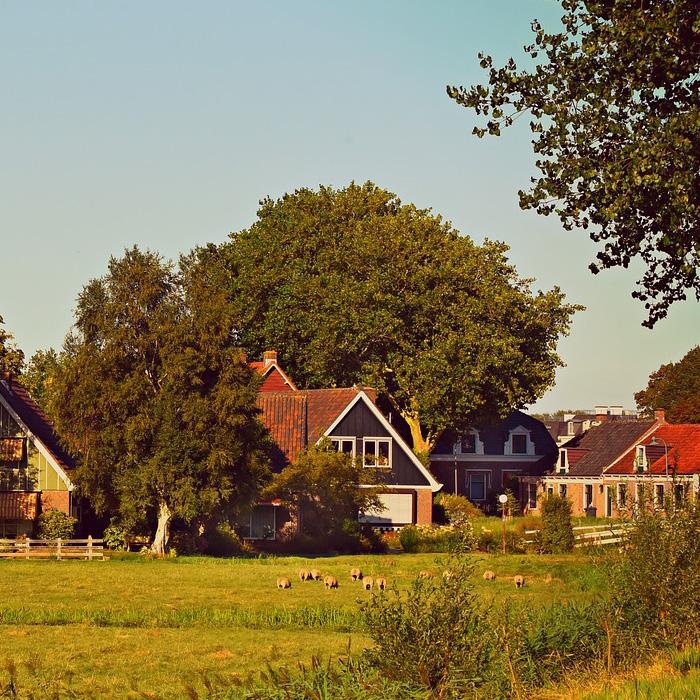



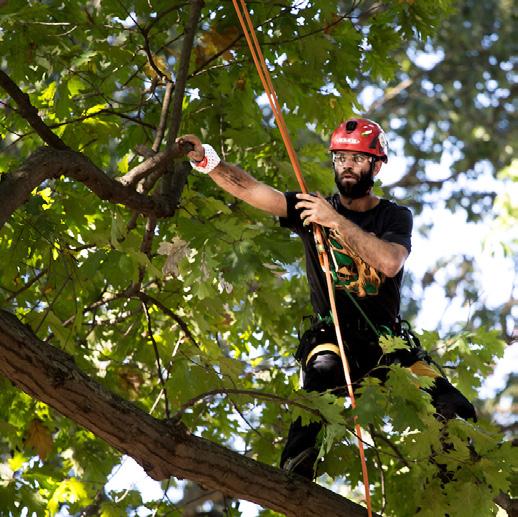





September 21, 2023





EQUITY POLICY #9
COMMUNITY FACILITIES SHOULD BE WELL INTEGRATED INTO THEIR RESPECTIVE NEIGHBORHOODS.
EDUCATION
To foster stronger communities, it is vital to design school sites that are appropriately sized and integrated within the community, rather than isolated and inaccessible. Ensuring neighborhood access to these facilities is crucial, as they can serve as catalysts for community-building. Schools should be viewed as valuable community assets, and it is essential to prioritize their suitability and safety for hosting diverse community events. This recognition and prioritization can contribute to the development of a culture of community engagement and participation.
Expanding successful after-school programs across schools in Lexington is another crucial step in building stronger communities. Noteworthy initiatives such as the Extended School Program (ESP) and the Recreation Enrichment and Learning Program (REAL) offer affordable, high-quality childcare services. While ESP caters to elementary school students, REAL is designed for middle school students. These programs, developed through collaboration between Lexington Parks & Recreation and the Fayette County Public School system, are currently operational in select schools. Expanding the reach of these programs would allow more students and families to benefit from the valuable services they provide, thereby positively impacting community wellbeing.
Lexington should consider implementing a program that offers a complimentary Student Bus Pass to all students enrolled in High Schools, Middle Schools, and Community Colleges within the city. This initiative aims to alleviate the financial burdens faced by low-income and diverse communities, enabling young individuals from across Fayette County to access its resources and opportunities equitably. Additionally, it fosters a culture of early exposure to public transportation and makes bus travel a common practice from a young age. Moreover, designating specific weekend destinations can further enhance community involvement in local events and venues, such as parks and libraries.

Finally, exploring the integration of public healthcare facilities within school buildings can yield significant advantages. This integration would enhance accessibility and convenience in accessing healthcare services for students and the wider community. By transforming schools into multifunctional spaces that encompass education, community events, and healthcare, the overall well-being and development of the community can be greatly enhanced. This comprehensive approach recognizes the interconnectivity of various community needs and contributes to holistic community development.
LIBRARIES
Libraries have transformed into much more than just a place to borrow books. They have become vital civic infrastructures, serving as centers for productivity, connectivity, and research. In response to the digital age and the effects of the COVID-19 pandemic, libraries have adapted by providing digital content and services, attracting patrons who value convenience. As remote work becomes increasingly prevalent in the post-pandemic world, libraries can further appeal to a wider audience by offering diverse spaces to accommodate different working styles. By championing sustainability and embracing change, libraries can continue to play a leadership role in their communities.
In Kalev Hannes Leetaru's article Libraries Looking Across Languages: Seeing the World Through Mass Translation, he envisions a world where language ceases to be a barrier to accessing information in real time. Through seamless translation into various languages, everyone would have equal access to information, transcending linguistic limitations. While technologies like the internet have broken down geographical barriers, linguistic obstacles still prevent many voices from being heard. Libraries, particularly those in multilingual communities, have taken steps to make their resources more accessible by employing bilingual staff and volunteers. However, providing assistance in another language is only one part of the solution; the information itself must also be available in a language that patrons can understand. Some libraries have begun translating their catalogs into the most commonly spoken languages, often relying on machine translation and volunteers for manual corrections. Although imperfect, this is a step in the right direction. To truly create a welcoming environment for all members of the community, libraries should collaborate with professional translation services experienced in translating literary works and other library materials. By making even a few popular works accessible to a wider audience, libraries can fulfill their purpose of providing equal and comprehensive access to information.
Libraries also play a crucial role in supporting creative aging and fostering community enrichment. As the older adult demographic becomes the dominant group in the United States by 2030, libraries are adapting to meet their needs for meaningful engagement and accessible learning. For lower-income communities and communities of color, libraries hold special significance as community anchors. They serve as places for acquiring job skills, exploring new technologies, and accessing services that cater to their specific needs. Libraries have a longstanding commitment to serving the poor, as recognized by The American Library Association's Policy #61, which aims to enable the participation of economically disadvantaged individuals in society. While libraries cannot single-handedly address the complex issue of homelessness, they strive to provide support and resources to unhoused individuals, including access to library cards and non-judgmental assistance.
Public libraries are essential institutions that act as vital links in diverse communities. A University of Pennsylvania study highlights their importance as socially responsive establishments that offer crucial support to vulnerable individuals. Libraries serve as hubs of diversity, reaching out to the people experiencing homelessness, individuals with mental illness or substance use disorders, recent immigrants, and those affected by trauma. Recognizing the potential of libraries, policymakers and government officials should incorporate them into budgetary plans to maximize their impact. Libraries have the capacity to improve population health, empower civic engagement, and foster active participation in local and global communities. As they continue to evolve and expand their roles, libraries are poised to become even stronger community anchors.
HEALTHCARE, SOCIAL SERVICES
Community-based healthcare facilities are essential in providing access to healthcare and social services, especially in areas with low levels of automobile ownership. These facilities must also prioritize being good neighbors to the communities they serve. This involves recognizing the unique needs and characteristics of each community and delivering services in a respectful and supportive manner.

Examples of community-based healthcare facilities that embody this approach include the San Francisco Community Health Center, which serves low-income and immigrant populations with culturally sensitive care, and the Montefiore School Health Program in New York City, which partners with local schools to provide comprehensive healthcare services to students. A local example is the UK HealthCare Community Engagement Program, which provides healthcare services and resources to communities in Kentucky.
To ensure that these facilities continue to be accessible and provide quality care, it is crucial that the city, service providers, and neighborhoods work together collaboratively. This includes developing and implementing effective transportation options for patients, as well as conducting regular evaluations of public safety concerns. By working together, Lexington can create a more equitable healthcare system that provides support to all members of the community and ensures that everyone has access to the care they need to thrive.
GREENSPACE, FOCAL POINTS ETC.
Providing access to parks, greenspace, and neighborhood focal points are a critical component of establishing a strong and healthy community. However, it is imperative to strive to make these amenities available to all community members, regardless of their housing circumstances. Ensuring equitable access to parks and other communal areas is an essential step towards guaranteeing that every member of the community, including those experiencing housing insecurity, have the opportunity to reap the benefits of these vital resources.
Recognizing the significance of these spaces, actions to guarantee that they are accessible to all community members must be taken. This involves taking measures to ensure adequate access during the development of new sites, as well as exploring opportunities to retrofit existing locations with improved access. Additionally, Lexington must prioritize the unique needs of those experiencing housing insecurity when designing and maintaining these public spaces. This can foster welcoming and inclusive communities where everyone can enjoy the advantages of nature and social connections.
Summary of Changes:
• Expounded on schools as a community asset
• Added benefits of library as a hub
• Acknowledged existing school programs
• Expounded on healthcare and social services
• Added comments on spaces for all including those facing housing insecurity
Summary of Changes August 17:
• Added comments on expanding language access.

Summary of Changes September 21:
• Consideration to the implementation of a program that provides a complimentary Student Bus Pass to all students currently enrolled in High Schools, Middle Schools, and Community Colleges within the city.
2018 Action Items:
• None
2045 Updated Action Items:
• Support expansion of ESP and REAL programs to more schools.
• Collaborate with libraries to improve access to additional community services and engagement.

2045 Updated Action Items (NEW)(September 21):
• Develop resources to promote the development of affordable housing with parks, greenspaces, and equitable transportation options.
2018 Placebuilder Criteria:
• None
2045 Updated Placebuilder Criteria:
• A-EQ9-1: School sites should be appropriately sized.
• A-EQ9-2: Shared open spaces should be easily accessible and clearly delineated from private open spaces.




WHERE ARE WE NOW?
Lexington has the potential to create a mutually beneficial relationship between people, the built environment, and nature, but to do so, careful land planning and development policies are essential Policies for new development and redevelopment must prioritize a sustainable built environment that supports positive climate action. A holistic approach to natural resource conservation, agricultural heritage, and equitable urban development is necessary to support broad-scale environmental resiliency and climate action.
Lexington's rural areas feature limestone geology, rolling hills of bluegrass, and abundant headwater streams, which contribute to the city's identity and support signature industries such as thoroughbred breeding and bourbon distilling. Within the urban area, parks, greenspaces, and tree canopy contribute to the city's beauty and environmental resiliency. However, it is crucial to address the equitable distribution of these resources.
To create a thriving community that benefits both its residents and the environment, Lexington’s urban and rural lands must work together in a coordinated way. The following sections describe the current progress in environmental planning for natural systems and ecology, agriculture, the built environment, and climate planning.


NATURAL SYSTEMS AND ECOLOGY
Natural systems are composed of biotic (flora and fauna), and physical (land and water), systems. Landscapes in Fayette County range from natural to farmland, suburban to urban, and with varying amounts of greenspace and forest scattered throughout.
LAND AND SOILS
Lexington's fertile soil is a valuable natural asset that has supported diverse crops and farming for centuries. Preserving fertile soils is vital for local food security, ecosystem health, and balanced carbon cycles. However, ongoing development is threatening the city's land and soil resources. While the Urban Service Boundary protects rural land and significant soils, population growth in the Urban Service Area puts greenspace, floodplains, and forests at risk. Proper policies and controls are necessary to protect the urban environment during development.
According to the Rural Land Management Plan, approximately 30% of prime farmland and significant soils in Fayette County have been lost to development since pre-settlement times. To safeguard agricultural land, Lexington has implemented the Urban Service Boundary and Purchase of Development Rights program, which protects over 73,998 acres of prime farmland and 38,150 acres of soils of statewide significance. As of 2022, the PDR program has preserved over 30,000 acres of Fayette County's agricultural land, with a goal of 50,000 acres to be preserved in total.
WATER RESOURCES
Fayette County lies within the Inner Bluegrass region, known for its karst geology featuring springs, caves, underground streams, and sinkholes. Creeks flow away from the city center and into surrounding counties, while the Kentucky River forms the southeastern border and serves as the county's drinking water source. To protect water quality, the Kentucky Geological Survey recommends several practices for source water protection areas. The city of Georgetown, located in Scott County to the north of
Lexington, obtains its drinking water from the Royal Spring Aquifer. Notably, 80% of the recharge area for the aquifer is located within northern Fayette County.
Fayette County contains nine watersheds, with the Kentucky River and Boone Creek exclusively located in the rural area. Seven headwaters originate within the Urban Service Area, which experiences significant pollution from nutrients, pathogens, and sediment. Stream segments in all nine watersheds are assessed for designated uses, including recreation, fish consumption, drinking water, and aquatic habitat. Unfortunately, all streams do not fully support at least one use, although Town Branch has improved from non-support in 2008 to partial support in 2010.
Since 2011, the LFUCG Division of Water Quality has implemented the Capacity Assurance Program to monitor sewer capacity and integrated stormwater management into development technical discussions. The Municipal Separate Storm Sewer Systems (MS4) program monitors non-point source pollutants and identifies illegal point discharges, while Remedial Measures Projects provide sewer capacity and abate weather-related overflows.


URBAN FOREST
Urban trees provide numerous benefits, such as reducing electrical costs by providing cooling shade and decreasing the heat island effect, cleaning the air by removing pollutants and absorbing carbon dioxide, controlling soil erosion by slowing and absorbing stormwater runoff, and providing habitat for wildlife. They also enhance the aesthetic appeal of neighborhoods and increase residential property values.
LFUCG Division of Environmental Services has made significant progress with the Urban Forestry Program, including tripling the budget, hiring a City Arborist and two new forestry crews led by certified arborists, and implementing street tree care and planting initiatives. Trees Lexington!, a grassroots nonprofit organization, is also working on community planting projects with community support.
A 2022 Urban Tree Canopy Assessment revealed that tree canopy cover increased from 20% to 23% from 2012 to 2020 in the Urban Service Area, except for District 1, which experienced a decrease of eight acres. The assessment found that 33% of land within the Urban Service Area is suitable for planting. The 12,649 acres of tree canopy in Lexington generate over $6.5 million in economic, environmental, and social benefits annually, as well as $111 million in carbon storage.
Urban trees can also serve as a tool for equity in a community. A Tree Equity Score calculated by American Forests indicates that canopy cover gaps often coincide with income and race, highlighting the need for diverse and equitable urban tree management.
BIODIVERSITY & NATURAL HABITAT
Biodiversity encompasses the variety of life on Earth, including different species, their genetic diversity, and the ecosystems in which they thrive. It has developed over billions of years through the intricate interactions between living organisms and their environment. Biodiversity is critical for providing essential ecosystem services that support human wellbeing, such as air and water purification, pollination, soil fertility, climate regulation, and food production. Additionally, biodiversity also contributes to the cultural, aesthetic, and recreational values that enhance the quality of life in cities.
The Kentucky River corridor and its tributaries remain the only significant forest cover in the area, providing habitat for a diverse array of plants and wildlife. Urban areas that support notable plant life or habitats include McConnell Springs Nature Park, the Arboretum on the University of Kentucky campus, Lexington Cemetery, Masterson Station Park, Jacobson Park, Veterans Park, and Kearney Hill Golf Links.
Protecting and enhancing biodiversity is vital for promoting sustainable development and resilience in the face of environmental challenges like climate change. It can be achieved through practices like preserving, restoring, and connecting natural habitats, using green infrastructure, promoting sustainable land use practices, and engaging local communities in conservation efforts. However, a comprehensive study of biodiversity assets and restoration planning in Lexington has yet to be conducted.
AGRICULTURE AND NATURAL RESOURCES


Fayette County's rural land is primarily used for agriculture, with a variety of farms ranging from horse farms to crop and cattle production. The 2017 Rural Land Management Plan provides an update on various plans, regulations, studies, and reports since the 1999 Rural Service Area Land Management Plan. Protecting the rural area is crucial not only for environmental sustainability but also for the Agricultural Cluster, a major economic driver for Lexington, which generates about $2.3 billion in output and supports one out of every 12 jobs in Fayette County, according to a University of Kentucky study
As the "Horse Capital of the World," Lexington has a rich cultural landscape of horse farms and racing that is protected under various policies, including the Purchase of Development Rights (PDR) program. Recent initiatives aim to connect the urban community with rural land, such as Horse Country Inc., which provides tours to horse farms, and programs like Blue Grass Farm to Table, Community Shared Agriculture (CSA), and farmers markets that bring local food and products to urban families, strengthening the rural-urban connection.
Climate change is affecting agriculture in central and eastern Kentucky by prolonging the frost-free growing seasons and increasing atmospheric carbon dioxide, which tends to increase crop yields. However, more frequent and severe droughts, spring and summer storms, and hot days may decrease crop success and yields, and have negative impacts on livestock health.
BUILT ENVIRONMENT
The built environment has a significant impact on environmental sustainability. The construction of buildings and infrastructure can result in habitat loss, disruption of natural waterways, and increased energy consumption. Poorly designed buildings and neighborhoods can also contribute to urban heat islands, which can lead to increased energy demand for cooling and lower air quality. However, incorporating sustainable design practices into the built environment can help mitigate these negative impacts. Buildings and infrastructure that are designed to be energy-efficient, use sustainable materials, and incorporate greenspaces can reduce their environmental footprint and promote sustainable living. Additionally, mixed-use neighborhoods with access to public transportation and walkable amenities can encourage alternative transportation methods and reduce reliance on cars, further reducing the impact on the environment.
ENERGY AND SUSTAINABILITY
Although LFUCG has an energy initiatives team that monitors the government's energy usage, there is currently no community-wide monitoring or transparency on energy usage. Creating energy awareness is the community's first step towards conserving energy. In 2012, a community-led voluntary plan called Empower Lexington was presented and supported by the Urban County Council, which made valuable recommendations for action plans, and major updates to this plan are currently underway
Looking to local partners, the University of Kentucky supports a robust Sustainability Program, which not only supports academic research, but also provides services and management for campus operations. Fayette County Public Schools is also a local leader in sustainability initiatives. By implementing multiple programs within the school system, young supporters are actively engaged in energy efficiency programs, with the hope that their effects will spread to their parents and families. Additionally, school building such as the net-zero energy Locust Trace AgriScience Center, are a showcase for energy and environment focused facility design.
GREEN INFRASTRUCTURE
Green infrastructure refers to the natural or semi-natural systems and features that provide a range of ecological, economic, and social benefits to people and the environment. It can include forests, wetlands, grasslands, parks, greenways, street trees, green roofs, green walls, permeable pavements, and other forms of vegetation or natural features that are integrated into the built environment. Green infrastructure is used to balance the built environment with natural systems, and to create more sustainable, resilient, and livable communities.
While green infrastructure provides significant ecological benefits, it also provides crucial social and physical wellness benefits to residents and visitors. To ensure effective planning and management of the green infrastructure network, the City has maintained various plans and resources, including the 1996 Greenspace Plan, 2002 Greenway Master Plan, 2018 Parks Masterplan, 2017 Urban Forestry Management Plan, 2017 Rural Land Management Plan, and the 2018 Bike and Pedestrian Master Plan. Additionally, the 2020 Stormwater Manual includes site-based green infrastructure best management practices to address stormwater runoff.


LFUCG currently manages over 500 acres of greenways that serve as stormwater management, water quality, environmental conservation, and recreation areas. Additionally, the city maintains just over 5,300 acres in 104 parks and golf courses across the county, and the 2018 Parks and Recreation Master Plan calls for more parks and open spaces to be reserved or provided during the development of new neighborhoods.
AIR QUALITY
The Clean Air Act Amendments of 1990 require all metropolitan areas to meet the National Ambient Air Quality Standards (NAAQS) established by the Environmental Protection Agency (EPA) for numerous criteria air pollutants, including ozone (O3), particulate matter, carbon monoxide (CO), nitrogen dioxide (NO2), and sulfur dioxide (SO2). Metropolitan areas that meet these standards are considered to be in attainment and are not required to establish control measures to improve air quality. The purpose of the NAAQS is to regulate criteria air pollutants that have been deemed a risk to public health.
The Lexington Metropolitan Area has previously been designated as non-attainment by the EPA due to concentrations of ground level ozone exceeding those considered acceptable under the NAAQS. The good news is that regional ozone concentrations have significantly decreased during the past 20 years primarily due to advances in fuel efficiency and emission reductions for motor vehicles and other internal combustion engines. As such, the Lexington Metropolitan Area is now considered in compliance with NAAQS standards for ozone.
However, recent research suggests that exposure to even modest levels of ground level ozone can have significant health consequences especially to the very young or old and to those with asthma or other lung diseases or those with cardiopulmonary diseases. Therefore, even though the region is in compliance with current EPA standards, the LFUCG has a public health interest in maintaining or further lowering regional ground level ozone concentrations.
The other pollutant of interest are two classifications of particulate matter which when inhaled in significant quantities can lead to negative health consequences such as decreased lung function, aggravated asthma, irregular heartbeats, nonfatal heart attacks and premature death for persons with heart or lung disease. Particulate matter is regulated by the EPA for sizes of 10 micrometers or less (PM10) as well as those less than 2.5 micrometers (PM2.5). In addition to the health consequences, particulate matter also contributes to negative impacts such as the acidification of lakes and streams, depleting soil nutrients, damaging sensitive forests and farm crops and decreasing the biodiversity of ecosystems.
The Lexington Region has been classified as ‘attainment’ for both classifications of particulate matter and current region wide levels are well below EPA standards for concentrations under the NAAQS. Nevertheless, research suggests exposure to unhealthy concentrations of particulate matter can be possible in close proximity to features such as busy highways, railroad yards, certain industries, and certain types of surface mining as well as any open wood burning. Of particular concern for the Lexington Region are emissions from vehicles, especially from arterial roadways in close proximity to residential areas, which according to the U.S. Department of Transportation disproportionality impact low-income and minority communities. Diesel fuel, which is a primary fuel source for most large trucks, is a particularly significant source of particulate matter emissions.
CLIMATE CHANGE & RESILIENCY PLANNING


Kentucky’s climate is changing. Although the average temperature did not change much during the 20th century, most of the commonwealth has warmed in the last 20 years. Average annual rainfall is increasing, and a rising percentage of that rain is falling on the four wettest days of the year. In the coming decades, the changing climate is likely to reduce crop yields and threaten some aquatic ecosystems. Floods, such as those experienced in Eastern Kentucky in July of 2022, may be more frequent resulting in significant damage to property, disruption of travel and increasing threats to life. Ironically, droughts may also be longer and more severe, which would increase the difficulty of meeting the competing demands for water in the Ohio, Tennessee, and Cumberland rivers.
The climate is changing because the earth is warming. People have increased the amount of carbon dioxide in the air by 40 percent since the late 1700s. Other heat-trapping greenhouse gases are also increasing. These gases have warmed the surface and lower atmosphere of the Earth about one degree
(F) during the last 50 years. Evaporation increases as the atmosphere warms, which increases humidity, average rainfall, and the frequency of heavy rainstorms in many places but contributes to drought in others. These changes are also influencing the magnitude and frequency of other extreme meteorological events, such as the windstorms of March 3, 2023, land falling hurricanes or winter weather events such as ice storms or extreme snowfall.
The warming climate is also accelerating the melting of polar ice-caps resulting in a significant rise of global sea level. This rise will not directly impact Lexington, being 1000 feet above sea level. However, many of the largest cities in the US, such as Miami, New Orleans, and New York, are already being impacted with many others to follow. This is resulting in the potential population displacement of tens or hundreds of thousands during the next several decades to other locations not being impacted. Lexington is potentially one such place of refuge.
Natural cycles and sulfates in the air prevented much of Kentucky from warming during the last century. Sulfates are air pollutants that reflect sunlight back into space. Now sulfate emissions are declining, and the factors that once prevented Kentucky from warming are unlikely to persist. By the end of the century, Lexington could have temperatures similar to Houston or New Orleans, according to researchers at the U.S. Geological Survey. High air temperatures can cause heat stroke and dehydration and affect people’s cardiovascular and nervous systems. Certain people are especially vulnerable, including children, the aging population, those with health conditions, and economically disadvantaged individuals. Hot days can also increase the frequency of dangerous concentrations of ground level ozone (see discussion regarding air quality).
To address the impacts of climate change, Lexington needs to conduct a two-pronged approach:
1. Reduce regional greenhouse gas emissions by identifying and ultimately eliminating significant sources of emissions as well as implementing any opportunities to capture and sequester atmospheric carbon.
2. Implement projects, policies and strategies which allow Lexington to adapt to a changing climate and become more resilient.


Fortunately, many of the city’s ongoing initiatives such as increasing urban tree canopy coverage, protecting rural greenspaces, and focusing on compact, walkable infill development are positive steps toward reducing urban heat island and greenhouse gas emissions. Additionally, through a grant from the US EPA, the LFUCG will be developing a Climate Pollution Reduction Plan in coordination with five surrounding counties for implementation in 2025 (Bourbon, Clark, Jessamine, Scott, and Woodford Counties). The intent of this plan is to identify and implement opportunities for the region to align with the federal goal of net zero greenhouse gas emissions by 2050.
“Environmental issues affect every part of our lives. And climate change will make it more important.” – Lexington Resident, 2022 OTT Response
Summary of Changes:
• Updated to provide more comprehensive overview, included new section on climate change.
Summary of Changes August 17:
• Revised to text to replace references of “carbon” with “greenhouse gas emissions”.
Recommended Updates to Theme B - Protecting the Environment


Summary of Changes September 21:
• Removed reference to 20-Year Comprehensive Water Supply Plan and replaced with reference to Kentucky Geological Survey source water protection area practices.
• Added clarification on Georgetown, Scott County and the relationship to the Royal Springs Aquifer recharge area.
• Added Jacobson Park and Veterans Park to list of notable urban habitats.
PROTECTION POLICY #2
CONSERVE AND PROTECT ENVIRONMENTALLY SENSITIVE AREAS, INCLUDING SENSITIVE NATURAL HABITATS, GREENWAYS, WETLANDS AND WATER BODIES.
Conservation refers to the protection, preservation, and management of natural resources and ecosystems in order to maintain their ecological, social, and economic values. Conserving environmentally sensitive areas across Fayette County benefits local communities and the environment as a whole by promoting biodiversity, protecting critical habitats for endangered and threatened species, and providing essential ecosystem services. These services include air and water purification, flood and drought risk mitigation, and climate change impact reduction. Environmental conservation can also improve public physical and mental health by increasing access to greenspaces and providing opportunities for outdoor recreation.
In the Rural Service Area, Lexington has taken significant steps in protecting the land and soils of statewide significance through the Purchase of Development Rights (PDR) Program. This program is the first Agricultural Conservation Easement program facilitated by a local government in Kentucky, and its primary goal is to preserve farmland, soils, and environmentally sensitive land in the Rural Service Area. As of 2022, more than 30,000 acres of Fayette County's agricultural land are now protected through the PDR program.
The 2017 Rural Land Management Plan (RLMP) is dedicated to the planning and management of land uses in the Rural Service Area. The RLMP calls out a large “Natural Area” located in the extreme southeastern part of the county as well as “Special Natural Protection Areas” which are dispersed across the Rural Service Area. The plan maps areas of high priority and slightly lower priority for preservation.
Inside the Urban Service Area, the need to protect environmentally sensitive areas must be balanced with the need to develop land for Lexington’s growing population. As development occurs, care must be taken to ensure that environmentally sensitive areas are protected so that they may continue to provide the ecosystem benefits that are so valuable to communities. Policies and regulations that support a balance of land for buildings and infrastructure with areas of greenspace are needed to offset the negative environmental impacts of the built environment. The 2002 Greenway Master Plan identifies land for conservation within the Urban Service Area, and this plan is currently being updated to reflect current conditions and best practices.
For development applications inside the Urban Service Area, a process should be established to identify and quantify endangered species on a proposed development site. New developments are advised to avoid dividing floodplains into private ownership with flood insurance. Care should be taken during the development process to provide additional protection areas around floodplains and to incorporate them into accessible greenspace via greenways. When greenways are located in neighborhoods, single-loaded streets or highly visible pedestrian access points can provide more open accessibility for residents to access greenways and any associated trails.
Conservation easements can be used to establish greenways within floodplains or other environmentally sensitive areas By working with developers and landowners, cities can use conservation easements to limit intrusive development and other activities, such as clear-cutting, that


could harm the environment. By using conservation easements to protect floodplains as greenways, cities can create a network of interconnected natural areas that help support the health of the local ecosystem and provide valuable public amenities.
Summary of Changes:
• Updated per review from Division of Environmental Services.
• Included reference to 2002 Greenway Master Plan, greenway conservation easements.
• Previous policy title: Conserve environmentally sensitive areas, including significant natural habitats, wetlands and water bodies.
Summary of Changes August 17:
• None
Summary of Changes September 21:
• Noted that the 2002 Greenway Master Plan is currently being updated.
2018 Action Items:
• Develop an inventory of Special Natural Protection Areas within the Urban Service Area.
2045 Updated Action Items:
• Develop a county wide inventory of Special Natural Protection Areas.
• Update land development regulations to include best practices for greenway access and implementation of conservation easements.
• Update the 2002 Greenway Masterplan.
2018 Placebuilder Criteria:
• B-PR2-1 Impact on environmentally sensitive areas should be minimized within and adjacent to the proposed development site.
• B-PR2-2 Dividing floodplains into privately owned parcels with flood insurance should be avoided. (moved to Restoration Policy 5)
• B-PR2-3 Floodplains should be incorporated into accessible greenspace, and additional protection should be provided to areas around them. (moved to Restoration Policy 5)
2045 Updated Placebuilder Criteria:
• B-PR2-1 Impact on environmentally sensitive areas should be minimized within and adjacent to the proposed development site.
• B-PR2-2: Development should include regularly spaced access with an adequate width to the greenway network and conservation areas.


PROTECTION POLICY # 7
PROTECT THE URBAN FOREST AND SIGNIFICANT TREE CANOPIES.
Protecting and preserving urban tree canopy is critical to maintaining the ecological, economic, and social health of urban areas. By incorporating tree protection and preservation policies and regulations into planning and development processes, cities can create more sustainable and livable communities that preserve natural resources for future generations.
The City of Lexington has post-development tree canopy requirements for each zoning category in Article 26 of the Zoning Ordinance. However, the current post-development canopy requirements fall short of achieving the citywide goals for increasing tree canopy, and further, the current regulations can result in a net-loss of tree canopy coverage during development. Higher canopy cover targets must be achieved to reach long-term goals.
The 2022 Urban Tree Canopy Assessment analyzed urban tree canopy change by the City’s zoning categories, which offered insight as to how development patterns have changed Lexington’s canopy over time. While individual canopy losses and gains occurred in all zoning classes, the overall canopy losses occurred in two zoning types: Industrial and Mixed Use. Industrial areas had the greatest reduction in canopy (-8 acres), and Mixed Use experienced the largest percent reduction in the canopy (4% or -6 acres). Commercial (Downtown) and Commercial (Other) sustained a less than 1% gain. Agricultural and Office/ Professional both increased their canopy by 2% in eight years. Canopy in Residential areas experienced the largest increase with a 4% gain (1,570 acres). This data should be used to inform updates to the City’s zoning requirements.
Additionally, Lexington currently has limited protections in place for existing trees on privately owned land. To protect the existing urban tree canopy on private property, Lexington should explore tree protection regulations to ensure there is no net-loss of tree canopy during the development process. Effective regulations will guide new development to prevent and mitigate tree loss, prioritize tree preservation, and propose alternatives when preservation is unfeasible due to development constraints. These regulations should encompass both tree preservation and replacement practices and address the conservation and replacement of both individual trees and forests. To determine the number of replacement trees for individual specimens, a formula based on size, species rating, and condition rating should be employed. Regarding forested areas, a ratio based on the area cleared should inform the replacement efforts. When replanting, the size of the new tree(s) should be specified as appropriate to offset the canopy loss as effectively as possible. These regulations could involve developing a fee-in-lieu process or another form of offsite mitigation.
Lexington should also continue to develop outreach programs and educational initiatives to inform and encourage private landowners and residents to preserve existing trees and plant new ones. Partnerships with local non-profit organizations, neighborhood associations, and contractors can also be expanded to plant trees in low-canopy and underserved neighborhoods. Community-based organizations and individual champions can also be engaged to promote stewardship, and volunteer planting and maintenance events can increase awareness in the community. Even with these efforts in place, regulatory reform is needed to enhance and strengthen the current Planning processes and regulations


to increase responsible development, protection and long-term management of urban trees on private property.
Summary of Changes:
• Previous policy title: Protect sensitive streams, natural habitats and wildlife in the urban service area; protect the urban forest and significant tree canopies as crucial ecological networks.
• Reduced scope of previous policy to focus on protecting the urban forest.
• Created two new policies to address streams and waterbodies (Restoration Policy 5) and biodiversity and habitat (Protection Policy 8)
Summary of Changes August 17:
• Added additional text to explain scope of proposed tree mitigation regulation changes.
Summary of Changes September 21:
• Added reference to partnerships between local non-profit organizations and neighborhood associations.


2018 Action Items:
• Update Zoning Ordinance to reflect national best practices on floodplain protections. (moved to Restoration Policy 5)
2045 Updated Action Items:
• Update Article 26 of the Zoning Ordinance.
2018 Placebuilder Criteria:
• B-PR7-1 Connections to greenways, tree stands, and stream corridors should be provided. (moved to Restoration Policy 2)
• B-PR7-2 Trees should be incorporated into development plans; prioritize grouping of trees to increase survivability. (moved to Restoration Policy 1)
• B-PR7-3 Developments should improve the tree canopy. (moved to Restoration Policy 1)
2045 Updated Placebuilder Criteria:
• B-PR7-1: Developments should be designed to minimize tree removal and to protect and preserve existing trees.
2045 Updated Placebuilder Criteria (UPDATED September 21):
• B-PR7-1: Developments should be designed to minimize tree removal and to protect and preserve existing significant trees.
PROTECTION POLICY #8
PROTECT AND ENHANCE BIODIVERSITY IN BOTH THE URBAN AND RURAL SERVICE AREAS.
Lexington should take proactive measures to protect and enhance biodiversity across both the urban and rural areas to ensure the wellbeing of people and the natural environment. Biodiversity refers to the variety of life on Earth, including the number and abundance of different species, as well as the genetic diversity within each species and the diversity of ecosystems and their functions. It is the result of billions of years of evolution and the interactions between living organisms and their environment.
Preserving biodiversity is crucial for maintaining healthy ecosystems, providing ecological services, and improving quality of life. It promotes social and environmental justice and supports local economies through ecotourism and green jobs. In the face of climate change, biodiversity conservation is essential for ecosystem resilience and adaptation.
Fayette County has undergone significant modification for agricultural and urban development, leading to the fragmentation of natural areas and a decline in biodiversity. The Kentucky River corridor and tributaries are the only significant forest cover in Fayette County, supporting a diversity of plants and wildlife. Rural areas with significant plant life and habitat include Hisle Park, Raven Run Nature Sanctuary, and Floracliff Nature Sanctuary. Urban areas of significant habitat include McConnell Springs Nature Park, the Arboretum on the University of Kentucky campus, Lexington Cemetery, Masterson Station Park, and Kearney Hill Golf Links. However, a comprehensive study of biodiversity assets and habitat in Lexington has yet to be completed.
The 2017 Rural Land Management Plan (RLMP) called out an area located in the southeastern part of Fayette County as a “Natural Area”. The Area, approximately 8,500 acres, included floodplains, riparian vegetation, steep slopes, and forest, and was home to a wide variety of aquatic and terrestrial wildlife.
The RLMP also listed “Special Natural Protection Areas”, which were dispersed across the Rural Service Area. The lists described mapped areas of priority for preservation, and included sites with rare species of plants, large blue ash trees, rare bird sites, river slopes, and natural bodies of water.
In addition to protecting biodiversity throughout the rural area, it is crucial to identify and protect biodiversity within the Urban Service Area. The 2002 Greenway Master Plan identifies land for conservation within the Urban Service Area, and this plan is currently being updated to reflect current conditions and best practices. As Lexington grows, a priority should be placed on protecting environmentally sensitive urban areas through smart planning, updating policies, and educating the public. Additionally, new regulations should be explored to increase biodiversity with native plantings and low impact landscaping (see Sustainability Policy 11).
Compiling a county-wide inventory of environmentally sensitive areas and areas of significant habitat will help build on the 2001 Greenway Master Plan and 2017 RLMP. With an updated biodiversity inventory, Lexington can make informed decisions on where and how new developments will directly or indirectly impact biodiversity and ultimately help increase biodiversity across the county.

Summary of Changes:

• New policy text to address biodiversity and habitat; updated per review from Division of Environmental Services.
• Replaced previous policy on greenspace planning, which has been integrated into Restoration Policy 2.
• Previous policy title: Integrate the greenspace plan into urban & rural area.


Summary of Changes August 17:
• None.
Summary of Changes September 21:
• Noted that the 2002 Greenway Master Plan is currently being updated.
2018 Action Items:
• None.
2045 Updated Action Items:
• Complete a county-wide biodiversity inventory and action plan.
2018 Placebuilder Criteria:
• None.
2045 Updated Placebuilder Criteria:
• None.
SUSTAINABILITY POLICY #5 EXPAND AND PROMOTE ENERGY EFFICIENCY, RENEWABLE ENERGY, AND ELECTRIFICATION INITIATIVES.
Lexington must prioritize sustainable and energy-efficient buildings and infrastructure, as well as renewable energy sources, to reduce the city's greenhouse gas emissions, decrease energy consumption and costs, and promote a more sustainable environment. Coordinated investment and commitment from both public and private sectors in sustainable buildings, infrastructure, and energy sources will help Lexington pave the way towards a greener future.
LFUCG established an Energy Management Plan in 2004 to promote conservation, reduce fuel and utilities consumption, and realize cost savings for city-owned properties and facilities. In 2009, LFUCG created the Energy Improvement Fund as a funding mechanism for energy efficiency and renewable energy initiatives. The Fund acts as a revolving loan where utility savings can be allocated to future public facility projects.
In the community, the city has partnered with the Kentucky Solar Energy Society to launch Solarize Lexington. This program helps property owners reduce their reliance on the electric grid by making it easier to install solar panels and includes a grant program to assist low-to-moderate income homeowners.
Empower Lexington, a community led voluntary plan launched in 2012, targeted community-wide sustainability and energy efficiency. The plan, approved by the Urban County Council in 2012, allows for the implementation of its recommendations, with responsibilities for implementation varying between local government, non-profits, and public/private partnerships. Steps were taken to update the plan in 2022, led by staff from the Division of Environmental Services.
In 2018, the Council approved legislation that established an Energy Project Assessment District (EPAD) in Fayette County. This allows commercial, non-profit, multi-family, agricultural, and industrial property owners to obtain special financing called PACE financing to fund energy-efficient upgrades and improvements. The PACE financing covers the full cost of upgrades, including solar panels, energyefficient heating and cooling systems, water conservation, and LED lighting. The long-term loan is repaid through a voluntary assessment on the property owner's tax bill, with a fixed interest rate and no down payment required.
To further promote these activities across Lexington, in 2016 LFUCG launched the Green Check Program, which recognizes businesses for their green initiatives and helps them expand their sustainability efforts. As of January 2023, 53 businesses have become certified. More recognition and awards programs should be explored, such as green neighborhood awards or green business operation pilot programs.


Summary of Changes:
• Updated per Division of Environmental Services Energy Section review.
• Included updated references to Solarize Lexington, EPAD/PACE Financing, Green Check Program, and the Empower Lexington Plan.
• Previous policy title: Continue and expand energy efficiency initiatives, promote energy efficient buildings by supporting grants and public recognition.
Summary of Changes August 17:
• Renumbered to Sustainability Policy 5
Summary of Changes September 21:
• Clarified LFUCG Energy Management Plan and Energy Improvement Fund is for city-owned properties and facilities.
2018 Action Items:
• None
2045 Updated Action Items:
• Establish Government/Community Targets For Renewable Energy
2018 Placebuilder Criteria:
• None
2045 Updated Placebuilder Criteria:
• B-SU5-1: Developments should incorporate energy efficient systems and renewable energy resources (i.e. wind, solar, etc.).
112 Imagine Lexington 2045’s Recommended Updates to Theme B – Protecting the Environment


SUSTAINABILITY POLICY #11 REQUIRE LOW IMPACT LANDSCAPING AND NATIVE PLANTS SPECIES.
With an estimated coverage of over 40 million acres, lawns represent the largest cultivated crop in America, accounting for about 2% of the country's land. Lawns require a significant amount of time and money in their maintenance, but their maintenance also results in indirect environmental harm. For instance, mowing and leaf blowing contribute to greenhouse gas emissions, fertilizers cause algal blooms, pesticides pollute, and watering lawns strains freshwater resources. To combat climate change and prevent the extinction of species, Lexington should revise regulations to encourage the replacement of traditional lawns with native plantings and low impact landscapes
An increasing number of communities are now planting with a purpose, aiming to help endangered wildlife, such as monarch butterflies, bees, songbirds, and to reconnect their cities to the local ecosystem. Low impact landscaping is a term that refers to this approach to designing and maintaining gardens and landscapes in a way that generates environmental and wildlife benefits. Po licy changes at the local level can advance low impact landscaping, including passing native plant ordinances, updating weed and vegetation control ordinances, and designating no mow zones.
Passing native plant ordinances can make a big difference for wildlife, as they rely on native plant communities for habitat. Cities, counties, and homeowners associations can control what plants are installed in landscaping, parks, medians, and other open spaces. In 2018, both Westchester County, NY and New Castle, DE signed executive orders mandating that all county parks and landscaping around county buildings include 100% native plants. The Township of Lower Makefield, PA passed an amendment to their Subdivision and Land Development provisions mandating 100 percent use of native plants used in new developments. Lexington has made a commitment to protecting, creating, and preserving Monarch Butterfly habitat throughout the community by supporting the Mayor's Monarch Pledge and other initiatives, and passing a native plant ordinance will help progress toward this commitment.


Updating weed and vegetation control ordinances is necessary to support wildlife-friendly landscaping while ensuring public safety. Most cities and counties have rules in place to ensure homeowners and businesses maintain their landscapes, but these ordinances are typically designed to enforce a conventional landscape aesthetic of close-cropped lawn and ornamental plantings that provide no wildlife habitat. Lexington’s Code of Ordinances regulate vegetation maintenance in a similar way, however an exception has been added for native plantings for the purpose of intentional naturalization, see Section 12-2(b) of the Code. Additionally, Lexington residents can also apply for a Riparian Buffer Permit to establish no-mow or native vegetation along streams. Lexington should promote and expand upon this work. The City of Minneapolis has an excellent model that supports wildlife-friendly landscaping while ensuring public safety which could serve as a guide.
Designating no mow zones can make a big difference for wildlife. Creating and managing "no mow zones" in appropriate places across cities allows native plants to grow and wildlife to flourish, while reducing maintenance costs. The National Wildlife Federation encourages cities with no mow zones to post signage and educate the public about the benefits to both wildlife and people. Greeley, CO, and Pinellas County, FL are examples of cities that communicate their "no mow" policy to residents,
providing details about the timing of mowing and which areas are on reduced mowing schedules. In Lexington, the Bring Back the Bluegrass program aims to brings similar naturalization efforts to parks.
Summary of Changes:
• New policy to promote and encourage native plantings and low impact landscapes.
• Previous policy title: Develop an overarching entity / organization for existing environmentallyfocused agencies to collaborate on sustainability programs and follow through on implementation. (Incorporated into new Sustainability Policy 3).
Summary of Changes August 17:
• Renumbered to Sustainability Policy 11
Summary of Changes September 21:
• Added reference to the LFUCG parks and Recreation Bring Back the Bluegrass initiative.


2018 Action Items:
• None
2045 Updated Action Items:
• Require that plantings for publicly owned property include at least 75% native species and decrease the area of mowed grass and irrigated land.
• Update codes, ordinances, plans, and manuals to require current best practices for low impact landscaping.
• Implement the Mayor's Monarch Pledge.
• Work with the Urban County Council and community partners to establish and promote “No Mow May” as a city wide initiative.
2018 Placebuilder Criteria:
• None
2045 Updated Placebuilder Criteria:
• B-SU11-1: Development should incorporate low impact landscaping and native plant species
RESTORATION POLICY #5 IMPROVE WATERSHED MANAGEMENT AND WATER QUALITY


A watershed is an area of land that drains into a particular body of water, such as a river, lake, or ocean. Watershed planning is the process of developing a comprehensive plan for managing the natural resources and land use within a particular watershed or drainage area with the goal of protecting and improving the quality of the water within the watershed. This process involves working with various stakeholders to identify and address potential sources of pollution, such as urban runoff, agricultural runoff (examples of non-point source pollution) and industrial discharges (point-source pollution).
Like other cities of similar size, Lexington’s watersheds and waterbodies face major pollutants, including nutrients, pathogens, and sediment. Stream segments in all nine of Lexington’s watersheds have been assessed to determine if they support designated uses for recreational contact, fish consumption, drinking water, and aquatic habitat. Unfortunately, all nine watersheds have streams that do not meet full support for at least one use, although Town Branch has improved from non-support in 2008 to partial support in 2010.
Lexington has several ongoing waterway improvement activities with a goal of improving impaired waterbodies throughout Fayette County. These include government activities such as stream restoration projects at Coldstream Park, West Hickman Creek at Veterans Park, and ReForest the Bluegrass—an annual event to engage the public in expanding the riparian buffers on local waterways. Additionally, LFUCG Division of Environmental Services is implementing the recently approved watershed management plan for West Hickman Creek. There are also existing approved Watershed Management Plans for the Cane Run and Wolf Run watersheds.
The City currently has numerous ordinances, regulations, and activities in place to protect and improve water quality. These include Chapter 16 of the Code of Ordinances, which regulate stormwater discharges, erosion and sediment control, discharges to the sanitary sewer system, and maintenance requirements for stormwater control devices, the Subdivision Regulations, which incorporate the Engineering Manuals by reference, and the Zoning Ordinance, which contains provisions for floodplain conservation and protection. These documents should be continuously reviewed and updated as needed to incorporate national best practices, especially as climate change accelerates changes to local weather patterns. Additionally, the City of Georgetown sources its drinking water from the Royal Spring Aquifer, of which 80% recharges in Fayette County. For this reason, Lexington developments within the Royal Springs Aquifer are requested to consult with the Royal Springs Water Supply Protection Committee prior to filing.
To further protect water quality from point-source pollution, the Division of Water Quality maintains an active Illicit Discharge Detection and Elimination (IDDE) program to respond to complaints of potential illegal discharges to the stormwater system, determine the source of the discharge, and conduct enforcement activities against the source of the discharge(s). The Division also oversees an active pretreatment program for industrial sanitary sewer users to ensure industrial discharges to the sanitary sewer system do not contain constituents which may cause the treatment plants to exceed permitted discharge limits. Furthermore, the Division is interested in the creation of a stormwater payment in lieu
of program that, based on specific criteria, could allow developers flexibility with on-site stormwater management in exchange for additional funding for stream restoration projects.
There are several volunteer groups and activities that residents with an interest in watershed and waterway quality can join. For example, several of Lexington's watersheds have volunteer groups, including Friends of Wolf Run, Hickman Creek Conservancy, Neighbors United for South Elkhorn, and Cane Run Watershed Lexington works to coordinate and communicate with these groups and others via the Stormwater Stakeholder Advisory Committee which meets on a quarterly basis. You can learn more about these groups, organized stream clean ups, and find out what watershed you live in by visiting www.lexingtonky.gov/livegreen.
Significant efforts have been made in Lexington to improve watershed management and waterway quality. However, there is still work to be done. Local impacts of climate change, such as increased storm intensity and rainfall followed by periods of drought and heatwaves, necessitate the need to ensure that Lexington’s watersheds and waterways are resilient and able to withstand these pressures. Continued investment in improving waterway quality is essential to protect local ecosystems, support the economy, and safeguard public health now and into the future.
Summary of Changes:
• New policy to bring focus to improving watershed management and waterway quality.
• Written with input from Division of Water Quality and Environmental Services
Summary of Changes August 17:
• Addition of Royal Springs Aquifer.
Summary of Changes September 21:
• Changed title to reference water quality as opposed to “waterway” quality.
• Updated implementation status of West Hickman Creek Watershed Management Plan and added references to approved Watershed Management Plans for Cane Run and Wolf Run watersheds.
2018 Action Items:
• None
2045 Updated Action Items:
• Update ordinances and regulations to reflect national best practices on floodplain protections.
• Update regulations to refer to the Royal Springs Aquifer requirements.


2018 Placebuilder Criteria:
• None
2045 Updated Placebuilder Criteria:
• B-RE5-1 Dividing floodplains into privately owned parcels with flood insurance should be avoided. (previously B-PR2-2)
• B-RE5-2 Floodplains should be incorporated into accessible greenspace, and additional protection should be provided to areas around them. (previously B-PR2-3)
• B-RE5-3: Developments within the Royal Springs Aquifer should consult with the Royal Springs Water Supply Protection Committee prior to filing.
2045 Updated Placebuilder Criteria (UPDATED September 21):
• B-RE5-3: Developments within the Royal Springs Aquifer should consult with the Royal Springs Water Supply Protection Committee.
137 Imagine Lexington 2045’s Recommended Updates to Theme B – Protecting the Environment





LIVABILITY POLICY #4 PROMOTE ECONOMIC DEVELOPMENT THROUGH IMPROVING THE LIVABILITY OF DOWNTOWN TO SUPPORT MORE RESIDENTS AND COMMUNITY SERVING BUSINESSES.
For at least a decade, cities with economic and employment environments similar to Lexington have recognized that attracting new and growing businesses is increasingly dependent on providing high quality of life places to live for workers and customers. Compact, walkable urban cores attract businesses and new residents alike. Providing abundant workforce housing with better access to transit, a problem identified by business leaders in Commerce Lexington roundtable discussions, is critical to supporting the employment needs of businesses. As Lexington’s economic growth increasingly depends on producing and retaining an educated and skilled workforce, our land use policies and zoning regulations must be revised to respond to these critical needs.
For employers, a key driver of higher productivity and wages in large cities is the economic benefit that comes from the geographic clustering of workers and firms in similar industries and sectors. The increased interaction and physical proximity between workers in large cities facilitates the interchange of knowledge and the learning of new skills from each other, which boosts the productivity of local workers. A 2013 project by the EPA’s Office of Sustainable Communities documented, in great detail, the productivity and innovation benefits for businesses that locate within these types of communities.
However, for employees, the COVID-19 pandemic radically altered where and how people work. As a result, it has created new opportunities to re-appropriate our urban space, adaptively reuse existing office buildings and steer new development in ways that can continue to attract businesses and employees in the key industrial sectors that will drive Lexington’s growth well beyond 2045. If a greater number of higher paid, higher skilled workers are able to work remotely and choose where they live independent of where their company offices are located, it only further underscores the need to create desirable, amenity-rich areas for people to live.
As the City seeks to enhance the livability of the downtown core, there is a continued need to provide accessible services and facilities to community members and visitors. This includes the promotion and development of increased housing, private businesses, and public spaces, like Town Branch Park and Town Branch Commons. However, what is often overlooked is the provision of necessitates that are the base of livability. Public bathrooms with changing facilities, drinking water fountains, and shaded seating all pay a significant role in making downtowns feel comforting and welcoming to all.
Summary of Changes:
• Replaced a policy that was too “operations” focused and replaced with a new policy that references the updated Goals & Objectives


Summary of Changes August 17:
• No change
Summary of Changes September 21:
• Inclusion of necessary facilities to ensure that downtown is welcoming and livable. (RESPONSE TO PUBLIC COMMENT)
Action Items 2018:
• None (see Placemaking Policy #13)
Action Items 2045:
• None
Placebuilder Criteria 2018:


• None
Placebuilder Criteria 2045:
• C-LI4-1: Development should contain a mixture of land uses, with a prioritization of residential.






